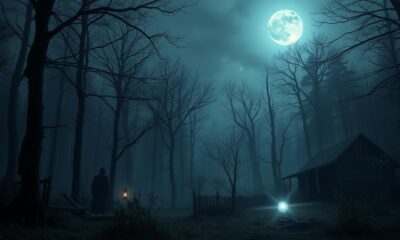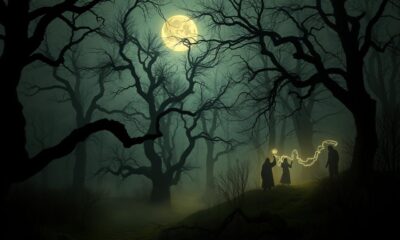monsters
Discover America’s Haunted History: Spooky Tales
Uncover America’s haunted history with chilling tales and ghostly encounters from the nation’s spookiest places. Join the adventure if you dare!

Have you ever felt a chill run down your spine while visiting an old building, as if you were being watched? You’re not alone. The hairs on the back of your neck stand at attention when you hear a creaking floorboard or a whisper in the wind. America is steeped in a rich tapestry of haunted history and American ghost stories that have been passed down through generations, captivating our imaginations and sparking our curiosity. It’s as if we carry the collective weight of those who walked before us.
From tales of forgotten souls to eerie encounters in the shadows, these spooky tales offer us a glimpse into our past. They remind us of love lost, lives cut short, and mysteries that refuse to fade into the annals of history. As you delve into this spine-tingling exploration of America’s haunted history, prepare to uncover legends that intertwine fact and folklore, creating an enchanting narrative that resonates within our deepest fears and fervent interests.
Let’s embark on this ghostly journey together, unearthing the secrets that intertwine with the very fabric of American culture. With every step, you’ll discover the legends that haunt our shared spaces, the stories that still echo through the years, and perhaps, rekindle a connection to those who once walked among us.
Key Takeaways
- Haunted history weaves together America’s past with captivating ghost stories.
- Spooky tales reveal insights into the lives and emotions of those who came before us.
- American ghost stories are a unique blend of folklore and reality, each tied to specific locales.
- Haunted places across the United States tell tales that spark curiosity and wonder.
- Exploring this haunted legacy allows us to connect with our history on a deeper level.
Introduction to America’s Haunted History
America’s haunted history is rich and diverse, drawing you into a world filled with captivating tales of ghost encounters and supernatural phenomena. This tapestry of narratives reflects the beliefs and practices handed down through generations, interconnected with American folklore. From early colonial settlements where fear of the unknown permeated daily life to modern-day hauntings, these stories add depth to the nation’s cultural heritage.
Throughout history, ghost stories have emerged as a powerful means to confront themes of loss, mortality, and the mysteries of existence. Each ghost encounter offers a glimpse into the past, allowing you to appreciate how these narratives have been shaped by events and individual experiences. The imaginations that fuel these legends help make the haunted history of America an enduring interest for many.
Ghost encounters aren’t just frights; they illuminate cultural sentiments and societal challenges over the years. The tales of restless spirits resonate deeply, as they often embody unresolved issues tied to the locations they inhabit. Such connections enhance both the authenticity and intrigue surrounding these haunted places, inviting you to explore the spectral side of American culture.

The Allure of Ghost Stories in American Culture
Ghost stories occupy a special niche within American culture, serving as captivating narratives that bridge the gap between history and mystery. The allure of ghost stories draws you in with themes of fear, intrigue, and the possibility of an afterlife. Many cultures, including ancient Chinese, Japanese, Middle Eastern, African, and Native American traditions, possess their own rich tapestry of ghostly tales. The cultural significance of these stories transcends generations, evoking emotions and reflections on mortality and the human experience.
In literary history, the echoes of ghostly encounters stretch back to the Greeks. Works like Hamlet and Aeneid intertwine the supernatural with moral lessons, demonstrating how ghostly figures often serve as catalysts for personal and societal change. The presence of spirits can also be found in biblical accounts, appearing in both Hebrew Scriptures and Christian texts. Throughout the Roman Empire, the Middle Ages, and the Renaissance, ghost stories proliferated, evolving with the times yet maintaining their fundamental appeal.
The engagement with ghost stories offers several benefits: they serve as exercises for the mind and emotions, pique your love for unraveling mysteries, and provide an appreciation for dimensions beyond everyday life. As Neil Gaiman suggests, these tales resonate deeply, tapping into childhood fears and the universal battle against evil.
As part of continuing education, the Humanities Kansas Hotline presents various cultural topics each month, revealing deeper insights into the cultural significance of supernatural fascination in America. For those looking to explore this phenomenon further, the Hotline can be contacted at humanitieskansas.org or 1-888-416-2018.
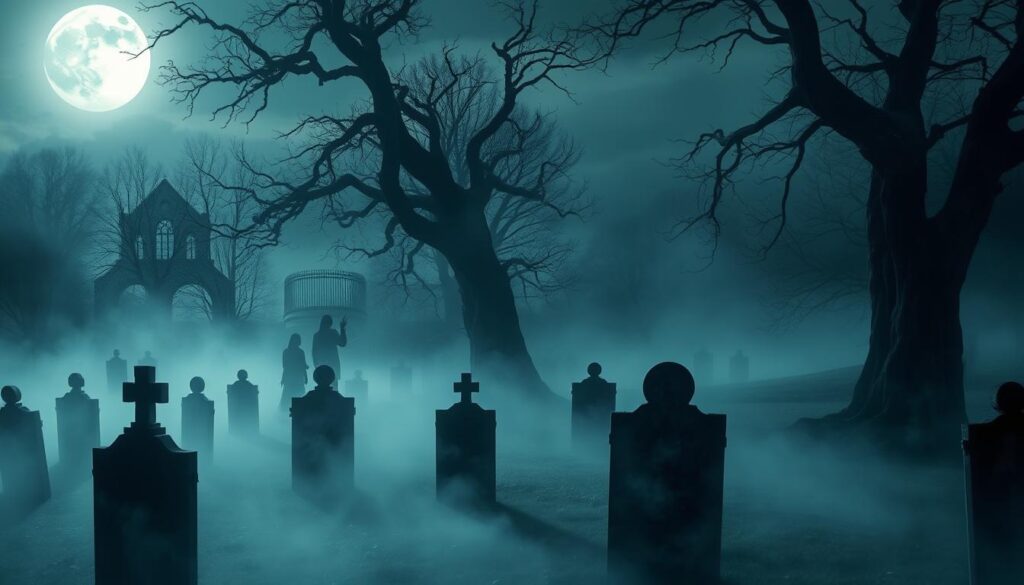
Exploring the Most Haunted Places in America
Dive into the chilling world of haunted places across the United States. Each site holds stories that intrigue ghost enthusiasts and casual visitors alike. From historic hotels to eerie battlefields, these locations offer a rich tapestry of ghostly legends and spectral stories.
The Queen Mary in Long Beach, California, boasts a dark history with 49 reported deaths aboard. These tragedies have spawned an array of ghost stories, making it a hot spot for ghost tours. Visitors frequently recount encounters with unexplained phenomena, capturing the essence of a haunted ship.
In Mineral Wells, Texas, the Hill House stands as a magnificent Victorian mansion, attracting countless paranormal investigators. Its expansive 3,800 square foot layout provides ample opportunity for unexplained occurrences, ensuring this location remains active in the realm of haunted places.
The small brick home on N. Amity Street in Baltimore, Maryland, where the famed writer Edgar Allan Poe resided, is an engaging attraction. Declared a National Historic Landmark, it draws curious visitors yearning to connect with Poe’s spirit while learning about the local ghostly folklore.
Atchison, Kansas features the notorious Sallie House, known for its mysterious happenings tied to the spirit of a girl named Sallie. Built between 1867 and 1871, this residence is a cornerstone of numerous ghost stories and a hotspot for paranormal investigations.
Travel to Cleveland, Ohio, to witness the strange tales emanating from the Franklin Castle. Constructed in the 1880s, it has gained notoriety for phantom organ music and unsettling discoveries, including human remains, solidifying its reputation among America’s haunted places.
Hotel Chelsea in New York City is not just a place to stay but a convergence of dramatic events and lingering spirits. Guests often share spine-chilling anecdotes, adding depth to its rich history of hauntings.
In New Orleans, the LaLaurie Mansion carries a dark legacy linked to Madame Delphine LaLaurie and grim discoveries that haunt this location to this day. Ghost tours here reveal unnerving tales that leave visitors contemplating long after they leave.
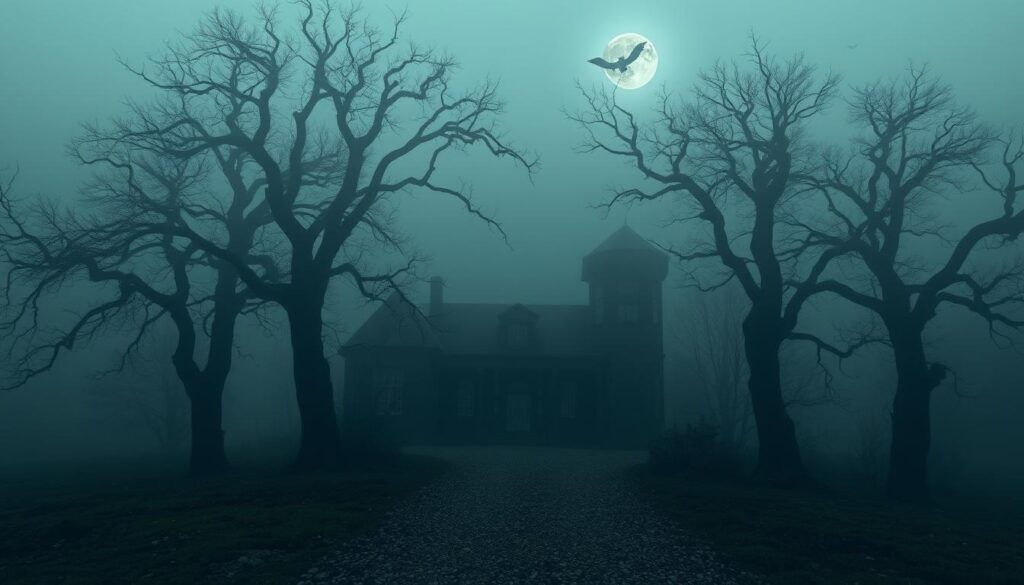
Connect with the eerie past at the Lizzie Borden house in Fall River, Massachusetts. Known for its infamous connection to the Borden family, this residence is precisely where scandal and mystery intertwine, resulting in notable claims of supernatural occurrences.
The Myrtles Plantation in St. Francisville, Louisiana, and the Moss Beach Distillery in California are further examples of haunted places that tantalize the imagination with unique ghostly residents. The Myrtles, steeped in history since 1796, invites accounts of various hauntings, while the Distillery has its own legend of the Blue Lady, creating an enchanting yet eerie atmosphere.
Other notable places you might consider exploring include Gettysburg National Military Park, Wilson Hall at Ohio University, and Bonaventure Cemetery in Savannah, Georgia, each boasting their own chilling stories and opportunities for ghostly encounters.
From bustling cities to serene countryside, exploring these paranormal locations offers an unforgettable experience steeped in history and mystery. Set out on your ghost tours and discover the unexplained tales that linger long after the sun sets.
Historical Hauntings That Shaped Local Legends
The tapestry of American history is intricately woven with threads of ghost stories and hauntings that reflect the spirit of the past. These historical hauntings have inspired local legends and brought tales of eerie experiences to life. Each location holds a unique narrative, ranging from the Revolutionary War to notorious criminals, resulting in engaging stories that continue to captivate people today.
The Haunting of Colonial Inn in Concord
The Colonial Inn stands as a remarkable piece of history and serves as a classic example of a haunting steeped in local legends. This haunted inn has seen many guests over the years and is known for its ghostly inhabitants who recall early revolutionary tales. Visitors often report a chill in the air and fleeting shadows that hint at the past, ensuring the spirit of the American Revolution remains ever-present.
Ghostly Encounters at Alcatraz Island
No exploration of historical hauntings would be complete without mentioning Alcatraz Island. Known as the infamous prison that housed some of America’s most notorious criminals, Alcatraz has a legacy filled with eerie stories. Guests frequently recount chilling sightings of former inmates roaming the grounds, echoing the unsettling atmosphere that once surrounded the prison. This blend of local legends and a gripping history makes Alcatraz a must-see for any ghost enthusiast.
Phantom Residents of Savannah, Georgia
Savannah is often hailed as one of the most haunted cities in the United States, boasting numerous tales of the supernatural. One prominent story is that of the Lady in White, a harrowing figure seen gliding through the streets. The city’s historical hauntings contribute to its rich narrative filled with ghostly sightings, captivating visitors and locals alike. The matches between storied pasts and present-day adventures enhance the cultural fabric, making Savannah a focal point for those intrigued by haunted inns and ghostly lore.
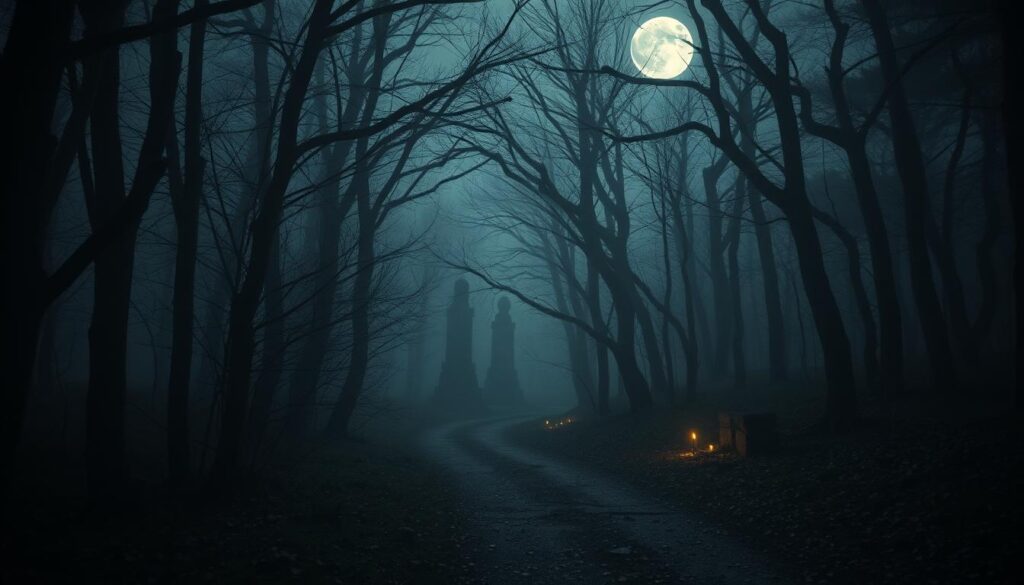
| Location | Key Historical Event | Type of Haunting |
|---|---|---|
| Colonial Inn, Concord | Revolutionary War | Ghostly guests and shadows |
| Alcatraz Island | Notorious prison history | Former inmates’ sightings |
| Savannah, Georgia | Various ghost tales | Lady in White apparition |
Famous Ghost Tours Across the United States
Ghost tours provide an exhilarating way to explore the dark and fascinating history of haunted cities. You become part of the rich tapestry of local legends and ghostly narratives, engaging with guides who bring chilling tales to life. Among the famous tours, two stand out for their unique experiences: New Orleans and Salem, Massachusetts. Each location offers you an unforgettable window into their spectral pasts, making them a must for enthusiasts of the supernatural.
Haunted Tours in New Orleans: A Must-Experience
New Orleans ranks high on the list of haunted cities, famed for its voodoo practices and ghost-filled cemeteries. Legendary ghost tours here guide you through the French Quarter, revealing stories of lost souls and eternal spirits. Expect to hear about the city’s fascinating past, including tales of the infamous Marie Laveau and the lingering spirits at St. Louis Cemetery No. 1. A visit to the city wouldn’t be complete without immersing yourself in these ghostly encounters.
Spooky Adventure in Salem, Massachusetts
Salem is synonymous with witch trials and dark history, making it a prime spot for ghost tours. Walk through the cobblestoned streets and listen to chilling recounts of the past, exploring sites where tragic events unfolded. The eerie atmosphere serves as a backdrop for exploring local lore, including tales of spectral sightings and the lingering aftermath of the witch trials. Visitors leave with both knowledge and goosebumps after an evening spent in this haunted city.

| Tour Location | Key Highlights | Unique Experiences |
|---|---|---|
| New Orleans | French Quarter haunting tales, St. Louis Cemetery No. 1 | Expert guides, interactive storytelling, voodoo lore |
| Salem, Massachusetts | Witch trial history, haunted locations | Cobblestone walks, chilling narrator accounts |
Both tours invite you into realms where history and the supernatural intertwine. Choose one or both for a memorable adventure that delves deep into the ghost stories that shape these haunted cities.
Understanding Paranormal Activity
Paranormal activity captivates many due to its mysterious nature. In a recent poll, 41% of American adults expressed a belief in ghosts, highlighting the widespread intrigue surrounding ghost phenomena. Approximately 20% reported personal encounters with spirits, which translates to over 50 million experiences across the United States. These numbers invite curiosity about the validity of such claims.
Investigation into paranormal activity often involves ghost hunters who rely on various equipment to detect unexplained occurrences. Common reports include moving doors, temperature fluctuations, and mysterious noises attributed to supernatural forces. While shows dedicated to ghost hunting have popularized these concepts, they also foster skepticism among scientists, who argue that these experiences do not constitute definitive evidence of ghosts.
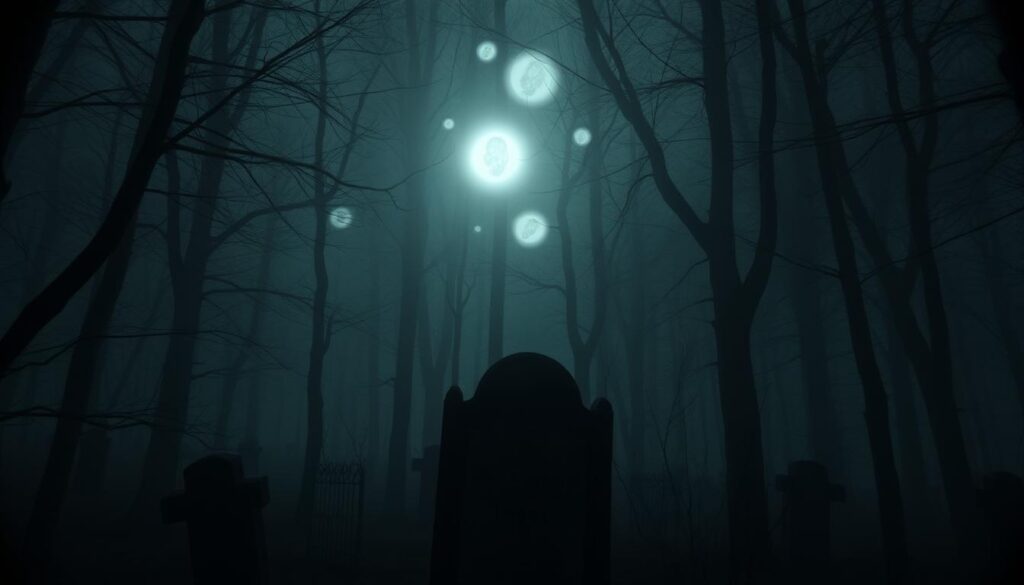
The field of supernatural research reveals complexities. Although many individuals report experiences that defy scientific explanation—like telepathy or ghost sightings—these encounters often result from psychological phenomena. Factors such as suggestion or conditions like sleep paralysis can significantly influence perceptions of paranormal activity.
Historical and modern approaches to understanding supernatural events include both occult societies and scientific institutions. Parapsychology, which examines psychic phenomena, is often criticized for its lack of replicable evidence. Nevertheless, researchers persist in exploring these phenomena using systematic methods. Recently, increased interest in unidentified aerial phenomena (UAPs) has prompted organizations like NASA to engage in scientific studies of such occurrences, signaling a shift towards a more empirical approach to the supernatural.
While the allure of ghostly tales remains, critical assessment of paranormal claims continues to be essential. The tension between belief and skepticism will likely shape the future of supernatural research. Understanding the nuances of paranormal activity helps you appreciate the ghost phenomena that enrich America’s haunted history.
Historical Buildings with Supernatural Encounters
America’s rich history is mirrored in its haunted buildings, each holding tales of supernatural encounters that captivate the imagination. These historical sites invite you to delve deeper into their stories, as numerous ghostly legends and phenomena continue to intrigue visitors.
The Infamous Moon River Brewing Company
Located in Savannah, Georgia, the Moon River Brewing Company is renowned for its vibrant atmosphere and spooky reputation. This establishment, originally built as a hotel in 1821, has a history of unsettling occurrences. Reports of ghostly figures roaming the halls and unexplained phenomena capture the attention of both locals and visitors. The combination of its age and the turbulent history of Savannah contributes to the building’s status as one of the city’s most notorious haunted buildings. The ghostly inhabitants are suspected to be former guests and workers, lingering to share their stories through eerie happenings.
Ghost Stories from the Winchester Mystery House
The Winchester Mystery House stands as a testament to bizarre architecture and the whispers of restless spirits. Located in San Jose, California, this sprawling mansion was constructed over 38 years by Sarah Winchester, widow of the rifle magnate William Wirt Winchester. Legends say she believed the house would appease the spirits of those killed by Winchester rifles. Visitors explore a maze of rooms, hidden staircases, and peculiar design choices, all believed to be influenced by the supernatural encounters Sarah sought to evade. Each creak and shadow within these walls adds to the allure of this historical site, where the spirits of the past continue to dwell.

Natural Landscapes and Their Ghostly Tales
Nature often serves as a canvas for ghostly tales, where the breathtaking beauty of natural landscapes intertwines with eerie legends and encounters. The Great Smoky Mountains captivate with their stunning vistas and harrowing stories. Here, mysterious lights illuminate the night, believed by some to be the spirits of ancestors roaming the valleys. The ethereal glow against the backdrop of these majestic mountains creates an atmosphere that invites both exploration and speculation.
The Haunting Lights of the Great Smoky Mountains
Visitors to the Great Smoky Mountains have reported enigmatic phenomena, particularly the appearance of ghostly lights that flicker and dance throughout the terrain. Commonly known as “mysterious lights”, they draw adventurers hoping to capture a glimpse of the supernatural. Some theorists suggest that these lights may represent lost souls or lingering spirits, adding depth to the tales of haunted nature in this remarkable area.
Mysterious Apparitions in the Grand Canyon
The breathtaking vastness of the Grand Canyon does not merely offer scenic hikes; it brings with it ghostly apparitions tied to its storied past. Legends persist about sightings of early explorers and other figures who met tragic ends in this grand natural landscape. The Canyon’s vastness can mask whispers of historical turmoil, unveiling the somber narratives that haunt its stunning cliffs and expansive vistas.

| Location | Legend | Type of Encounter |
|---|---|---|
| The Great Smoky Mountains | Mysterious lights believed to be ancestral spirits | Witnesses report seeing fluttering lights at night |
| The Grand Canyon | Ghostly figures of early explorers | Apparitions linked to tragic events from the past |
| Plymouth, Massachusetts | Hauntings tied to the native American village | Various ghost sightings throughout historic sites |
| Salem, Massachusetts | Spirits of those affected by witch trials | Encounters in ancient homes and streets |
These locations exemplify how natural landscapes can conceal haunting stories, enriching our understanding of America’s history through ghostly tales. As you explore these areas, remember that they host not just vibrant life but echoes of the past waiting to be uncovered.
Hidden Cemeteries with Dark Histories
Hidden cemeteries across the United States present a fascinating glimpse into the past, showcasing haunted burial grounds with complex and dark histories. Visitors often find themselves captivated by stories of loss, love, and lingering spirits.
One intriguing site is Westminster Hall & Burying Ground in Baltimore, Maryland, where the legend of the screaming skull has enthralled many. At the stroke of midnight, it is said a minister’s skull screams, echoing through the night air, captivating those brave enough to stand vigil.
Further north, Union Cemetery in Easton, Connecticut, holds the eerie title of ‘White Lady Cemetery.’ Dating back to the 1600s, this location features reports of a spectral lady in white who appears and then mysteriously vanishes when approached by vehicles.
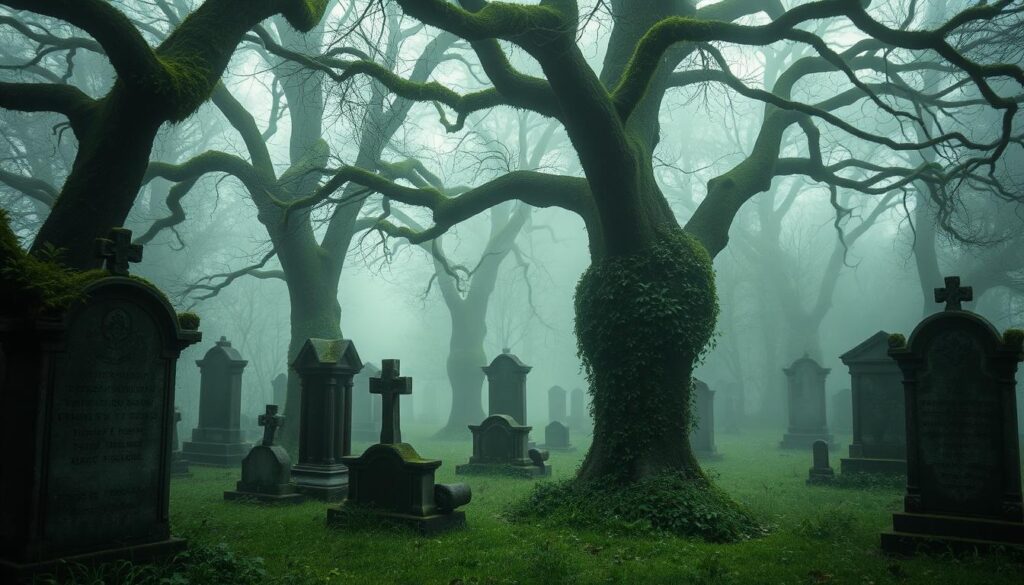
Moving south, Bonaventure Cemetery in Savannah, Georgia, tells the tragic tale of Gracie Watson, a young girl who succumbed to pneumonia. Her ghost, believed to appear near her statue, is rumored to shed tears of blood, adding emotional weight to the site.
Resurrection Cemetery in Justice, Illinois, is tied to the ghost of ‘Resurrection Mary,’ a young girl killed in a hit-and-run accident. Witnesses have reported seeing her walking along the road where she met her untimely end, seeking a ride back to her final resting place.
In Salem, Massachusetts, Howard Street Cemetery bears the dark legacy of Giles Corey, a victim of the infamous witch trials. His spirit reportedly haunts the area, marking it with unexplained tragedies through the years.
Hollywood Forever Cemetery in Los Angeles features ghosts of renowned figures like Rudolph Valentino, while mysterious sightings of a lady in black have intrigued paranormal enthusiasts.
Many hidden cemeteries harbor local legends and peculiar occurrences. The Silver Cliff Cemetery in Colorado showcases the enigmatic Silver Cliff Lights, glowing orbs that bounce among the tombstones at night. Stull Cemetery in Kansas, often described as a gateway to hell, has a reputation linked to witches and dark rituals.
Saint Louis Cemetery No. 1 in New Orleans adds another layer to America’s haunted narrative, associated with the burial of the renowned Voodoo Queen Marie Laveau. The cemetery’s spectral activities attract many ghost hunters and curious visitors.
Each of these hidden cemeteries enriches the landscape of America’s haunted history, drawing you into stories of spectral encounters and dark legacies waiting to be uncovered.
The Connection Between History and Ghostly Legends
The intricate ties between history and ghosts take shape across America. Ghost stories often echo historical events, embedding significant narratives within them. These tales derive inspiration from both indigenous cultures and the experiences of those who came after, leading to a rich tapestry of narratives that continue to captivate audiences today.
Influence of Indigenous Cultures on Haunted Narratives
Indigenous cultures have long viewed their natural surroundings as sacred spaces filled with spirits. Ghost stories often serve as reflections of cultural beliefs, portraying landscapes as living entities with memories of the past. For example, the Hudson Valley, a historical crossroads, carries legends suggesting that ghostly imps have lingering connections to natural phenomena. These narratives reveal how deeply ingrained the relationship between the land and its history is, illustrating the profound respect for the ancestry tied to these narratives.
Pioneer Settlements and Their Spirits
The history of pioneer settlements contributes significantly to modern ghost tales. These stories often emerge from hardship and strive against adversity. In San Antonio, ghost tales accompany the city’s rich Mexican culinary culture. The legend of the haunted railroad tracks, where tragic accidents occurred, manifests in local traditions where visitors come to search for the handprints of lost children using baby powder. Similarly, ghost stories in the Hudson Valley are interconnected with events from the Revolutionary War, including the spectral visits of historical figures like Thaddeus Kosciuszko and Henry Hudson. As you explore these narratives, you gain insight into the experiences and struggles faced by pioneers. These pioneer spirits remind us of the complexities of American history, bridging the gap from the past to the present.

Spooky Attractions to Visit This Halloween
As Halloween approaches, thrill-seekers look forward to experiencing the spine-tingling excitement of spooky attractions. This season offers an array of haunted experiences that invite you to test your courage and delve into the eerie atmosphere surrounding Halloween events. California and Virginia shine as prime destinations for those eager to explore haunted houses, escape rooms, and immersive fright experiences designed to leave you breathless.
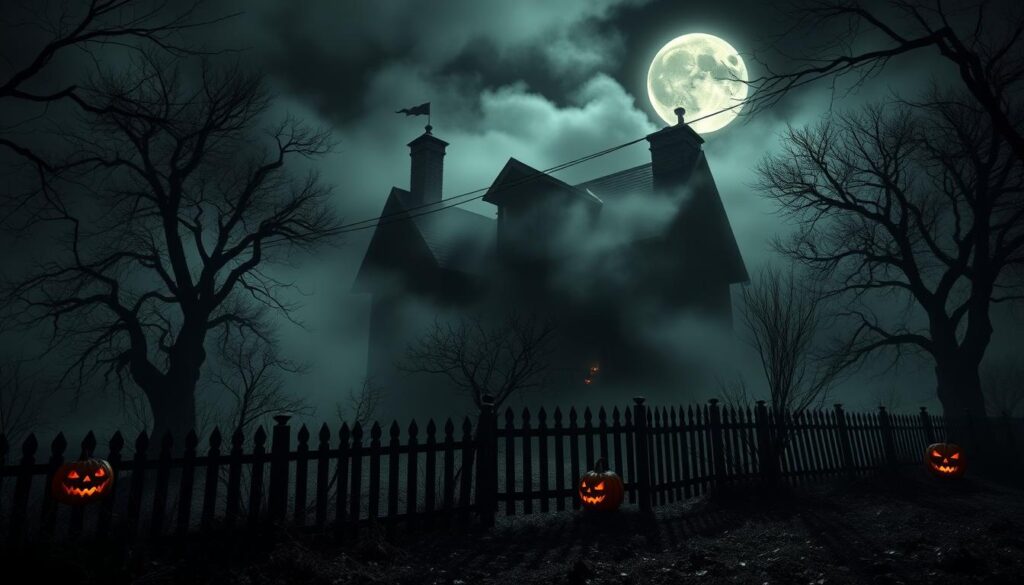
Must-See Haunted Attractions in California
- The Stanley Hotel in Estes Park is renowned for its ghostly residents and serves as inspiration for Stephen King’s “The Shining.”
- Visit Heceta Head Lighthouse in Oregon, haunted by the ghost Rue, who brings a gentle chill to this picturesque site.
Frightening Events in Virginia
- The Milltown Haunt in Lovettsville opens its doors for 16 terrifying nights, promising an unforgettable night of fear.
- Hollywood Cemetery in Richmond offers history and haunting appeal, being the resting place of over 18,000 Confederate soldiers and notable figures.
- Explore The Ferry Plantation House in Virginia Beach, a location said to host eleven spirits from a tragic shipwreck in 1810.
- At Terror Manor in Roanoke, navigate over 40 rooms filled with thrills and chills this Halloween.
Year after year, these attractions become popular Halloween destinations, attracting those who wish to embrace the haunting legends of America. Whether you’re drawn to the spine-tingling stories or just looking for some thrilling fun, these spooky attractions provide the perfect setting for a memorable Halloween. Get ready to face your fears and experience the hauntings that await you!
Haunted Mythology: Fact or Fiction?
The cultural tapestry of America is rich with haunted mythology, serving as a bedrock for countless ghost stories that either captivate or terrify. As you delve into these tales, you may start to question what lies beneath the surface. Are these narratives based on reality or merely figments of an active imagination? The distinction between fact vs. fiction can be murky when considering urban legends and myths.
Iconic legends, such as the Jersey Devil and the Mothman, highlight regional peculiarities while igniting local imaginations. Each tale is a thread woven into the community’s identity, encouraging you to ponder how these stories evolve over time. Folklore not only entertains but also shapes perceptions of places, feeding into the belief that some locations harbor restless spirits or poignant histories.

When examining college campuses, for instance, the longevity of older buildings contributes to a wealth of ghost stories. Students often share chilling experiences related to seemingly mundane locations like libraries and basements. These sites foster community bonds while simultaneously stirring unease. In this space, bathrooms become unnerving when paired with ghost legends, deepening the connection between the supernatural and everyday life.
Consider the influence of haunted mythology in the realm of entertainment. The rise of the horror genre, spurred by authors like Stephen King and classic Gothic literature, reflects societal fears. Zombies represent an existential dread rooted in the fear of death. Directors today continue to explore themes of race and identity through similar narratives, blurring the line between fact vs. fiction.
As you explore these rich stories, remember that many ancient ghost tales weren’t crafted merely for fright. Instead, they aimed to impart morality, bridging the gap between the living and the deceased. Today’s ghost stories mirror this merging of themes, allowing modern audiences to reflect on historical injustices while indulging in thrilling entertainment.
| Legend | Origin | Cultural Significance |
|---|---|---|
| Jersey Devil | New Jersey | Symbol of local folklore |
| Mothman | West Virginia | Warning of disasters |
| Lincoln in the Bardo | Modern literature | Explores afterlife perspectives |
As you engage with these stories, it’s essential to appreciate their role in shaping our understanding of the spine-chilling and the spectral. By embracing both the tangible heritage and its mythological embellishments, you unlock enriched narratives that provoke curiosity and reflection.
Haunted History: Why Are We Drawn to the Supernatural?
The fascination with haunted history runs deep in American culture, representing a blend of curiosity, fear, and emotional resonance. This supernatural appeal prompts many to delve into ghost stories, revealing a common thread between mortality and the unknown. You may find yourself captivated by tales of spirits and shadows, reflecting on personal experiences intertwined with collective storytelling.
As Halloween approaches, Americans are anticipated to spend a staggering $10.6 billion, a clear indication of the cultural significance of supernatural themes. The decline in organized religion, particularly among younger generations, fosters an environment where belief in the paranormal thrives. Individuals increasingly seek connections to something beyond the physical, filling a void with narratives steeped in haunted history.
Literature has played a pivotal role in shaping our views on the supernatural. Gothic tales from as far back as the 18th century, such as the iconic “Frankenstein,” capture dichotomies of terror and romance. These stories, now prevalent across various media, continue to shape our perspectives. The emergence of internet lore like “The Slender Man” highlights the adaptability of supernatural ideas, ensuring their longevity within modern culture.
Statistics underscore this enduring interest. Over 40% of Americans affirm the existence of ghosts, while more than one-third share experiences of perceived spiritual encounters. These numbers illuminate a shared human fascination that persists, regardless of declining belief in traditional religious frameworks. Cognitive biases, such as patternicity and pareidolia, further explain why individuals interpret ambiguous situations as paranormal, enhancing our collective engagement with ghostly narratives.
In essence, haunted history taps into fundamental human emotions surrounding mortality and the fear of the unknown. It provides solace, suggesting a form of life after death, which remains compelling as we explore our relationships with the deceased through storytelling, media, and personal experiences.
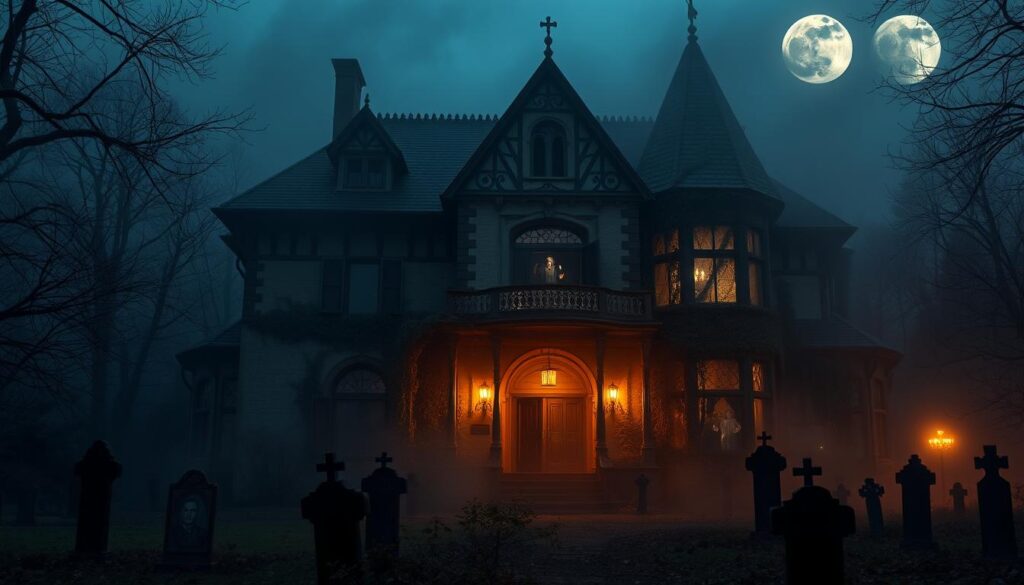
Conclusion
As we conclude this journey through America’s haunted history, the intertwining of the past and present becomes undeniably evident. The legacy of ghosts is not merely a collection of eerie tales; it’s a crucial component of American culture that connects you to a time long gone. These ghost stories not only entertain but also provide insight into the social and historical contexts from which they emerge.
Your exploration of haunted sites reveals more than just supernatural occurrences; it opens a window into collective memories, emotional experiences, and community bonds. Each narrative is a thread woven into the fabric of America, inviting you to ponder the significance of the otherworldly within your own life. Such reflections often lead to questions about history, identity, and even the unanswered mysteries that still haunt us.
So, whether you choose to venture to Chatham’s famed haunted halls or share a cup of coffee while listening to chilling anecdotes in a local diner, remember that the allure of the paranormal invites you to view the world through a new lens. Embracing the haunted history surrounding you can lead to unforgettable experiences that echo the ages past, leaving you with chilling encounters and stories that linger long after the telling.
FAQ
What is considered haunted history in America?
Why are ghost stories significant in American culture?
What are some famous haunted places to visit in the U.S.?
How do ghost tours enhance the haunted history experience?
What are common phenomena associated with paranormal activity?
What is the significance of natural landscapes in ghost stories?
How do hidden cemeteries tie into America’s haunted legacy?
How does history influence ghostly legends?
What unique attractions can be explored during Halloween?
Are there real myths associated with hauntings in America?
What psychological factors contribute to our fascination with the supernatural?
monsters
Unlocking Cryptid Mysteries: Explore the Unknown
Delve into the shadows of the unknown as you uncover the secrets behind cryptid mysteries and their elusive origins. Join the search for truth!

Have you ever wandered through a misty forest or peered into the depths of a dark lake and wondered what might be lurking just beyond your sight? This curiosity—the draw towards the unknown—is a shared thread that unites many of us. In the vast tapestry of existence, many believe there are mysterious creatures and unknown entities, hidden just out of reach, waiting to reveal their secrets. Welcome to the captivating world of cryptozoology, where the existence of beings such as Bigfoot and the Loch Ness Monster is more than mere folklore. It is a journey into the heart of our deepest questions about nature, existence, and the thrill of discovery. Here, we will dive deep into the cryptid mysteries that have captivated hearts and minds throughout the ages, inviting you to explore the possibilities of life beyond what we know.
Key Takeaways
- The term “cryptozoology” was coined in the 1950s by Belgian zoologist Bernard Heuvelmans.
- The 1967 Patterson-Gimlin film is one of the most analyzed pieces of evidence in the field.
- Early reports of creatures like the Loch Ness Monster date back to the 6th century.
- Modern technology plays a vital role in investigating and understanding these hidden creatures.
- Organizations and communities support enthusiasts in uncovering the truth behind these legends.
Introduction to Cryptozoology
Cryptozoology delves into the study of creatures that remain shrouded in mystery due to their unproven existence. This fascinating field explores the legends and folklore surrounding these elusive beings, often termed cryptids. You might find the concept intriguing as it intertwines scientific inquiry with cultural narratives, aiming to uncover truths behind stories passed down through generations.
The allure of cryptozoology extends to various creatures that have captured the human imagination. From the legendary Bigfoot to the enigmatic Loch Ness Monster, each has provoked curiosity and debate among enthusiasts and skeptics alike. A significant aspect of this exploration involves examining the origins of these tales, which frequently highlight our desire to connect with the unknown.
Moreover, engaging with the folklore of cryptids often involves understanding the context in which these creatures were born. While some stories may be rooted in myth, their persistence in popular culture signifies a collective fascination with the possibility of beings that exist outside of our current understanding of the world.

As you journey through the realm of cryptozoology, you may discover a blend of skepticism and belief that defines this unique discipline. It encourages not just the search for proof, but also a deeper appreciation for the stories and cultures linked to their legends. This exploration opens doors to countless mysteries waiting to be unraveled.
Understanding Cryptid Mysteries and Their Impact
Cryptid mysteries have long fascinated people, weaving themselves into the fabric of cultural narratives across the globe. These creatures, often described as large and fearsome, capture the imagination and prompt discussions about biodiversity and our relationship with nature. The legends surrounding cryptids like Sasquatch, the Loch Ness Monster, and the Chupacabra significantly influence public perception, resulting in a blend of skepticism and intrigue.
Many will recognize the story of Sasquatch, rooted in indigenous lore from the Pacific Northwest. Its mainstream appeal surged in the 1950s, especially after the release of the famous Patterson-Gimlin film. Such legends not only drive tourism, especially to sites like Loch Ness, but also inspire researchers and enthusiasts to delve deeper into the unknown, highlighting the profound cultural significance of these tales.
The Chupacabra, emerging in Puerto Rico during the mid-1990s, serves as another prime example. Sightings across Latin America and the southern United States perpetuate its status as a feared predator. As perceptions around these cryptids evolve, they often shed light on broader societal concerns, including environmental awareness and conservation efforts.
The interdisciplinary nature of cryptozoology brings together elements of anthropology, zoology, paleontology, and folklore. This diversity enriches the conversations surrounding cryptid mysteries, encouraging both serious inquiry and playful speculation. As individuals nurture their curiosity, they contribute to a growing discourse that helps demystify our world and promotes engagement with ecosystems.

The Fascination with Mysterious Creatures
The lure of mysterious creatures has captured your imagination, connecting deeply with ancient myths and cultural stories from around the world. Cryptids like Bigfoot and the Loch Ness Monster spark a blend of fear, curiosity, and excitement, making them fascinating subjects for exploration and legend.
Hollywood has embraced these cryptids, turning them into iconic characters that enrich thrilling stories. Films such as “Bigfoot: The Most Famous Cryptid?” and “The Loch Ness Monster: Scotland’s Favorite” showcase the allure of these enigmatic beings, fueling your desire to learn more about their origins and places in folklore.
Across various cultures, a myriad of mythical beings share the stage with cryptids. The Chupacabra in Latin America and the Yeti in the Himalayas reflect a diverse global landscape, each contributing unique narratives to our understanding of *mysterious creatures*. In West Virginia, the 1960s ignited the legend of the Mothman, a winged figure believed to predict disasters. These compelling stories have perpetuated long-lasting legends, captivating audiences of all ages.
Scientific scrutiny invites both intrigue and skepticism regarding the existence of cryptids. Despite numerous sightings reported in diverse locales—from the vast expanses of North America to the depths of Loch Ness—research challenges claims of authenticity. The fascination surrounding cryptids often evolves into controversial discussions, as empirical evidence remains elusive. This ongoing discourse between believers and skeptics highlights a complex relationship with these legendary beings, maintaining interest among enthusiasts.
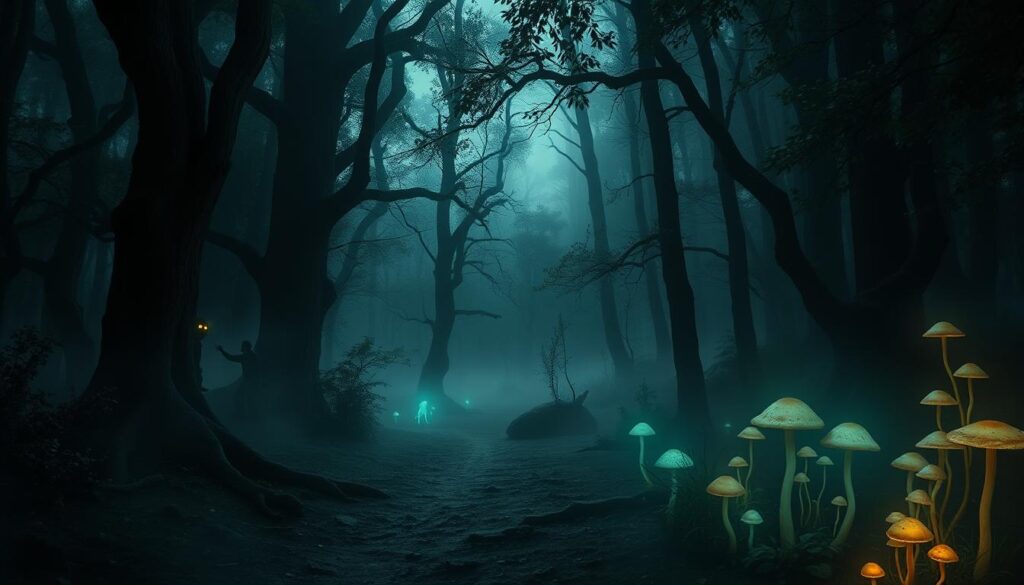
Ultimately, the passion for cryptids is fueled by its cultural stories, myths, and the quest to unravel what lies beyond conventional understanding. As you delve deeper into the world of these extraordinary beings, the intersection of belief, folklore, and personal experience continues to draw you into the enigma of the unknown.
The History of Cryptozoology
The journey of cryptozoology is rich and varied, deeply interwoven with ancient myths and evolving through the years. It reflects humanity’s unending curiosity about the unknown, laying the groundwork for a unique branch of study that continues to intrigue people around the globe.
Ancient Myths and Legends
From the serpent-like creatures of the seas to the fantastical beasts inhabiting forests and mountains, ancient myths have significantly influenced our understanding of cryptids. These stories not only provided entertainment but also served as vehicles for cultural beliefs, fears, and hopes. Understanding these ancient myths adds layers to the cryptozoology history, allowing us to trace how perception of mysterious creatures has evolved over centuries.
Evolution of the Field in the 20th Century
The 20th-century evolution of cryptozoology marked a pivotal shift from folklore to a more structured investigation of legendary creatures. With growing interest in science and exploration, cryptozoologists began to document sightings and anecdotal evidence in a systematic way. This change fostered an environment where once-mythical entities could be studied as legitimate subjects of inquiry, bridging the gap between scientific skepticism and public fascination.
Influential Figures in Cryptozoological Research
Remarkable pioneers in the field have left a lasting impact, shaping cryptozoology history through their advocacy for scientific approaches. Figures like Bernard Heuvelmans, often regarded as the father of cryptozoology, sought to categorize and analyze cryptids objectively. Another key contributor, Ivan T. Sanderson, brought a naturalist’s perspective to the subject. Their efforts significantly advanced the framework within which this intriguing field operates today, inspiring both professionals and enthusiasts alike.
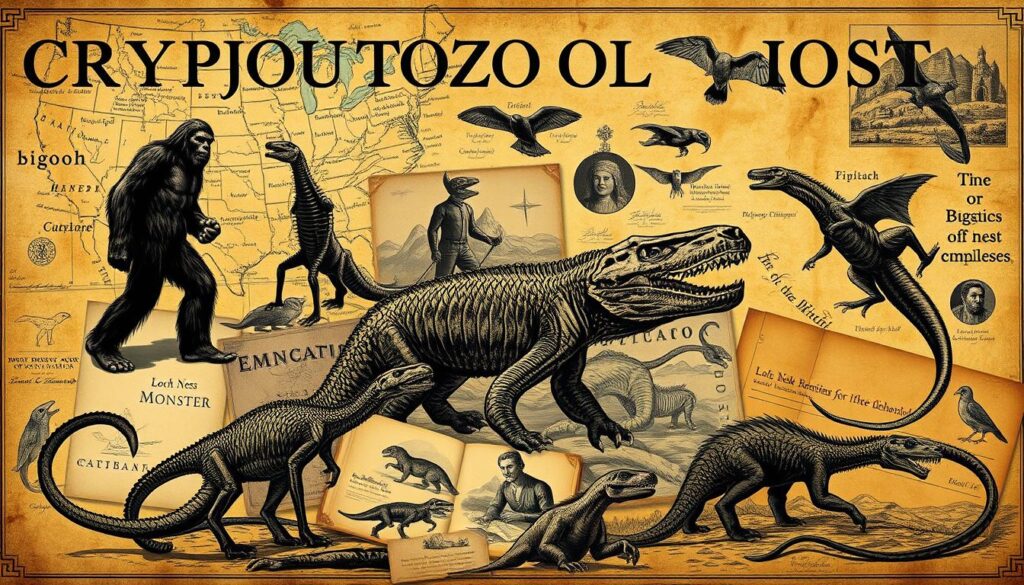
Notable Cryptids Around the World
Throughout history, various notable cryptids have captured the imagination of people across the globe. Each creature carries unique stories and sightings that contribute to the rich tapestry of folklore and mystery. Three particularly intriguing cryptids are Bigfoot, the Loch Ness Monster, and the Chupacabra. These creatures continue to evoke fascination and debate among enthusiasts and skeptics alike.
Bigfoot: The North American Legend
Bigfoot, often referred to as Sasquatch, is a legendary hominid cryptid believed to inhabit the forests of North America. Sightings date back to the early 20th century, and the iconic Patterson-Gimlin film remains a core piece of evidence fueling discussions about its existence. Many enthusiasts venture into the wilderness, hoping to catch a glimpse of this elusive creature. The lore surrounding Bigfoot speaks to the enduring desire for exploration and the unknown.
The Loch Ness Monster: Secrets Beneath the Surface
The Loch Ness Monster, affectionately known as “Nessie,” has intrigued people for generations. Alleged sightings in the deep waters of Loch Ness in Scotland give rise to a multitude of theories about this aquatic enigma. Despite extensive investigations and technological advancements, scientific proof of the Loch Ness Monster remains elusive. The mystery continues to draw visitors to the loch, eager to uncover its secrets.
Chupacabra: A Mysterious Predator
Originating from Latin America, the Chupacabra has gained notoriety as a bloodsucking creature associated with livestock attacks. Reports of sightings often describe it as a small, spiky animal or a strange canine-like creature. Various theories attempt to explain its origins, sparking widespread curiosity and concern within affected communities. The Chupacabra serves as a captivating example of how folklore can intertwine with real-world events.

The Techniques Used in Cryptozoological Investigations
Cryptozoology requires a unique set of techniques to probe the mysteries surrounding elusive creatures. These cryptozoological investigations often combine traditional methods with modern technology, making each study multifaceted and comprehensive.
Fieldwork stands at the core of these investigations, allowing researchers to collect evidence in natural habitats. Techniques such as extensive interviewing of eyewitnesses provide vital insights and accounts that might direct subsequent studies. Considerable attention is given to physical evidence collection, like footprints, hair samples, and other biological markers. Each piece of evidence can serve as a crucial clue in the quest to identify cryptids.
With advances in technology, the landscape of cryptozoological investigations has evolved. The incorporation of DNA analysis enhances researchers’ ability to understand and document varieties of life, sometimes revealing hidden species. Motion-sensitive cameras are being utilized for evidence collection, capturing unexpected glimpses of wildlife that may include cryptids. These cutting-edge techniques are essential for verifying claims and ensuring the continuity of the research.

The interdisciplinary nature of these investigations showcases a refreshing perspective on scientific inquiry. Encouraging collaboration between different fields amplifies the effectiveness of techniques deployed in the search for cryptids. Each discovery contributes not only to the body of knowledge about unknown species but also fosters a broader understanding of biodiversity and conservation efforts.
| Technique | Description | Significance |
|---|---|---|
| Fieldwork | In-depth research in natural habitats. | Enables first-hand evidence collection and observation. |
| Interviews | Engaging with eyewitnesses for firsthand accounts. | Provides context and leads for further investigations. |
| Physical Evidence Collection | Gathering biological samples like hair and footprints. | Pivotal for verifying cryptid existence and behavior. |
| DNA Analysis | Utilizing genetic research to identify species. | Reveals hidden or unknown entities through genetics. |
| Motion-sensitive Cameras | Automatically captures images of wildlife in action. | Enhances chances of documenting rare or elusive creatures. |
Challenges Facing Cryptozoologists
Delving into the world of cryptozoology presents a unique set of challenges. Researchers navigating this field encounter numerous roadblocks that can hinder their pursuit of evidence and understanding about legendary creatures. From scientific skepticism to pressing funding issues, these hurdles require careful consideration, particularly regarding ethical considerations that impact local ecosystems and communities.
Skepticism from the Scientific Community
One of the most significant challenges cryptozoologists face is the skepticism of the scientific community. Many scientists question the legitimacy of cryptozoology, often citing the lack of empirical data and rigorous methodology. This scientific skepticism creates an environment where valid investigations struggle for acknowledgment. Critics argue that the discipline sometimes operates on a foundation of folklore rather than science, raising doubts about the reliability of the claims made in this mysterious field.
Funding and Ethical Considerations
Securing sufficient funding remains a major obstacle for cryptozoological research. Unlike more established scientific fields, funding opportunities for cryptozoology are limited, complicating the execution of thorough investigations. Furthermore, ethical considerations become intertwined with these financial hurdles. Researchers must approach their work with respect for local ecosystems and cultures, ensuring that their methods do not harm existing wildlife.
| Challenge | Description |
|---|---|
| Scientific Skepticism | Doubt from the scientific community regarding the legitimacy and methodology of cryptozoology. |
| Funding | Limited financial resources make it challenging to conduct comprehensive research. |
| Ethical Considerations | Need to balance scientific curiosity with respect for ecosystems, local cultures, and animal welfare. |
This landscape emphasizes the importance of transparency and integrity in the field. As you explore cryptozoology, consider how the blend of skepticism, funding uncertainties, and ethical considerations shapes the overall narrative of these enigmatic creatures.

Cryptid Mysteries: Unsolved Enigmas in Science
Unsolved enigmas have always captivated the human imagination, particularly within the realm of cryptid mysteries. Numerous cases persist, remaining mysteries that invite both curiosity and skepticism. The events surrounding the Dyatlov Pass incident in 1959, where nine ski-hikers died under mysterious circumstances in Russia, exemplify how such enigmas can fuel ongoing speculation and analysis.
The realm of cryptid mysteries often intersects with phenomena that challenge conventional understanding. For instance, in December 2016, reports emerged of a CIA officer experiencing unexplained symptoms while stationed at the American Embassy in Havana. The situation escalated, leading to a series of similar cases impacting Americans and Canadians, ultimately unveiling research gaps in neurobiology and environmental health. By late 2018, over 26 Americans and 13 Canadians were experiencing illness linked to strange noises in their surroundings. Such cases reveal significant research gaps that beg for scientific exploration.
Another captivating case involves the infamous Mary Celeste, which departed New York in 1872 under the command of Captain Benjamin Briggs. The ship was later found adrift with no sign of her crew, presenting an unsolved enigma that has puzzled maritime historians for decades. This mystery, along with many others, sheds light on the gaps in our understanding of human behavior under extreme conditions. Cryptid mysteries like these highlight the importance of continued inquiry into our environment and the phenomena within it.
The Bermuda Triangle serves as another example, where a boat with 20 passengers disappeared in 2020, prompting extensive searches without any clues regarding their fate. Such occurrences not only fascinate enthusiasts but underline the essential nature of scientific exploration to uncover truths that lie hidden beneath the surface.
Ultimately, these unsolved enigmas remind you of the mysteries yet to be explored, reinforcing the significance of ongoing research in these intriguing phenomena. The importance of biodiversity and species conservation cannot be understated, as various species have historically provided resources for medicine and other essential aspects of human life. As scientists continuously strive to fill research gaps, the hope remains that future endeavors will bring clarity to these enduring cryptid mysteries.

| Cryptid Mystery | Details |
|---|---|
| Dyatlov Pass Incident | Nine ski-hikers died mysteriously in 1959, sparking ongoing investigation. |
| Havana Syndrome | A series of mysterious illnesses affected CIA officers beginning in 2016. |
| Mary Celeste | An abandoned ship found in 1872 with no crew aboard, a longstanding maritime mystery. |
| Bermuda Triangle Disappearance | A boat with 20 passengers vanished in 2020 without a trace after extensive searches. |
The Role of Technology in Cryptozoology
Technology plays a vital role in reshaping how cryptozoologists approach their field. From DNA analysis to the deployment of advanced equipment like drones and camera traps, these innovations enhance the search for elusive creatures. The combination of scientific methods and cutting-edge technology offers new perspectives and tools for evidence collection, driving cryptozoology into a more scientific frontier.
How DNA Analysis Reshapes Our Understanding
Advancements in DNA analysis allow researchers to analyze biological samples more precisely. This enables scientists to identify known species while exploring the possibility of uncovering unknown ones. By examining environmental DNA collected from areas reputed to be home to cryptids, you can gather vital evidence that supports or refutes sightings and lore. This technique significantly increases the rigor of cryptozoological research, offering hope for more substantial findings in the future.
Using Drones and Camera Traps for Evidence Collection
The advent of drones and camera traps has transformed evidence collection methods in cryptozoology. Drones equipped with high-resolution cameras facilitate large-scale surveys of remote wilderness, capturing footage that may reveal signs of cryptids. This non-invasive approach respects their habitats while improving the efficiency of data collection.
Camera traps, strategically placed in areas with frequent cryptid sightings, utilize motion sensors to document animal activity. These devices prove invaluable, contributing quantitative data to the ongoing exploration of creatures like Bigfoot. Furthermore, thermal imaging and sound analysis through specialized microphones offer additional ways to detect creatures during night expeditions. With these advancements, the realm of cryptozoology expands further into the scientific arena.

The Socio-Cultural Relevance of Cryptids
Cryptids occupy a unique space in the socio-cultural fabric of many communities. These mysterious creatures inspire fascination and curiosity, often becoming integral parts of local folklore and storytelling. The cultural impact of cryptids can be seen through various forms of media, including stories, films, and television shows, as noted by T.S. Mart, illustrating their significance in shaping collective identities.
Many communities draw upon legends of cryptids to forge connections among members. For instance, Native American tribes have long shared oral histories featuring beings such as Bigfoot and the Loch Ness Monster. J. Mullis points out that these tales serve not only to entertain but also to pass down valuable cultural traditions and beliefs. The socio-cultural relevance extends beyond mere fascination, as the shared narratives reinforce cultural bonds and foster a sense of belonging.
The mid-20th century witnessed a surge in cryptid sightings, influenced in part by the rise of television and fantasy-based media. The popularity of these stories likely contributed to the continued intrigue surrounding cryptids. At the same time, some researchers have sought to debunk these myths. In “Abominable Science,” D. Loxton and D.R. Prothero highlight the absence of scientific evidence for creatures like the Loch Ness Monster, prompting discussions on the fine line between folklore and fact.
The table below showcases various well-known cryptids and their socio-cultural relevance:
| Cryptid | First Sighting | Significance | Associated Folklore |
|---|---|---|---|
| Bigfoot | 1958 (Bluff Creek, California) | Community identity in North America | Legends shared by Native American tribes |
| Mothman | 1966 (Point Pleasant, West Virginia) | Symbol of local lore; tied to historical events | Linked to the Silver Bridge collapse |
| Chupacabra | 1995 (Puerto Rico) | Growing interest in Latin American folklore | Stories of livestock exsanguination |
| Jersey Devil | 18th Century | Inspiration for local myths and media | Various documented sightings |
| Skunk Ape | 1960s (Florida) | Regional cultural identity, especially in the Everglades | Noted for its pungent odor and elusive nature |
Through the lenses of socio-cultural relevance and folklore, cryptids resonate deeply within communities. They bridge the gap between myth and reality, serving as a compelling source of inquiry that both entertains and educates. With their rich histories and connections to cultural memory, cryptids continue to captivate the imagination of many.
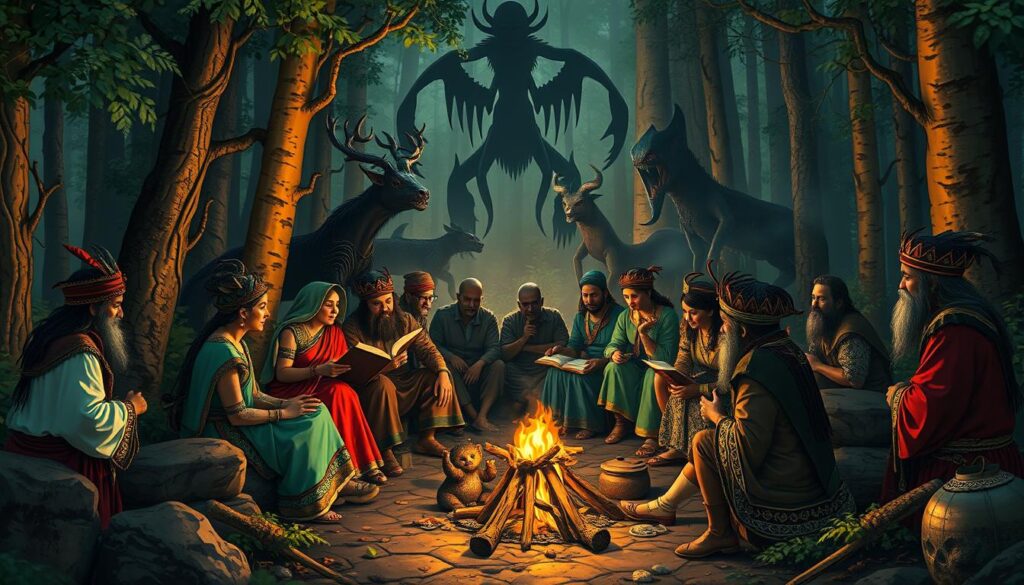
Collaboration Between Cryptozoology and Mainstream Science
The intersection of cryptozoology and mainstream science presents a unique landscape for exploration. Although cryptozoology often remains on the fringes, the potential for collaboration enriches both fields. Traditional scientific approaches combined with cryptid studies could lead to exciting discoveries, particularly as researchers seek to integrate diverse methodologies.
Bridging the Gap: Integrating Different Approaches
Efforts to bridge the gap between cryptozoologists and mainstream scientists open doors for innovative research. With a focus on collaboration, scholars can work in harmony with cryptozoologists, employing scientific principles to study unidentified species. This integration allows for:
- Joint DNA analysis initiatives that enhance the genetic understanding of cryptids.
- Knowledge sharing between ecologists and cryptozoologists, leading to new insights into habitat preservation.
- The establishment of ethical guidelines to respect local cultures and wildlife, fostering a collaborative spirit.
Future Prospects for Research and Discoveries
The future prospects for both fields seem promising as technology advances and skepticism begins to wane. With increased interest in their correspondence, cryptozoologists can expect more legitimacy in their studies. Potential areas for development include:
- Utilizing advanced imaging technology to capture evidence of elusive beings.
- Investigating historical accounts and local folklore alongside scientific methods.
- Collaboration with environmental scientists to highlight conservation needs in biodiverse regions.

In summation, collaboration between cryptozoology and mainstream science is essential to this ongoing journey. As ethics and integration improve, the opportunities for new discoveries skyrocket, potentially uncovering secrets behind creatures once thought to be mere myths.
Personal Accounts and Eyewitness Testimonies
Personal accounts and eyewitness testimonies play an essential role in the realm of cryptozoology. These narratives provide a wealth of anecdotal evidence that fuels interest and ongoing investigations into cryptid sightings. Although some may question their reliability due to their subjective nature, these accounts are often the first clue to uncovering the mysteries surrounding these elusive creatures.
For example, reports of a creature estimated to be 60-70 feet long have captured attention and speculation. Eyewitnesses describe its dorsal fins as towering between 8-10 feet, jagged with chunks missing—a thrilling detail that has intrigued both enthusiasts and skeptics alike. Over a span of 6-7 minutes, the creature was observed surfacing near a ferry, suggesting a sustained presence that further adds to its mystique.
The rich tapestry of folklore among native Alaskans includes legends of a gigantic cryptid that roams the waters around Kodiak. This longstanding belief showcases how personal accounts become woven into cultural narratives and shape our understanding of cryptid sightings. Similarly, the Minnesota Iceman, a unique figure encased in ice, has appeared across various locations in the United States, garnering numerous eyewitness testimonies that lend credence to the enigma.
Eyewitness descriptions of creatures such as the Wendigo, reported to stand as tall as 15 feet with glowing eyes, further illustrate the fervent details individuals provide. Minnesota has amassed hundreds of accounts of Bigfoot, with sightings dating back to 1908. Locations such as Lake Pepin have had reports of a serpent-like creature known as Pepie since as early as 1871, adding an extra layer of intrigue to these personal narratives.
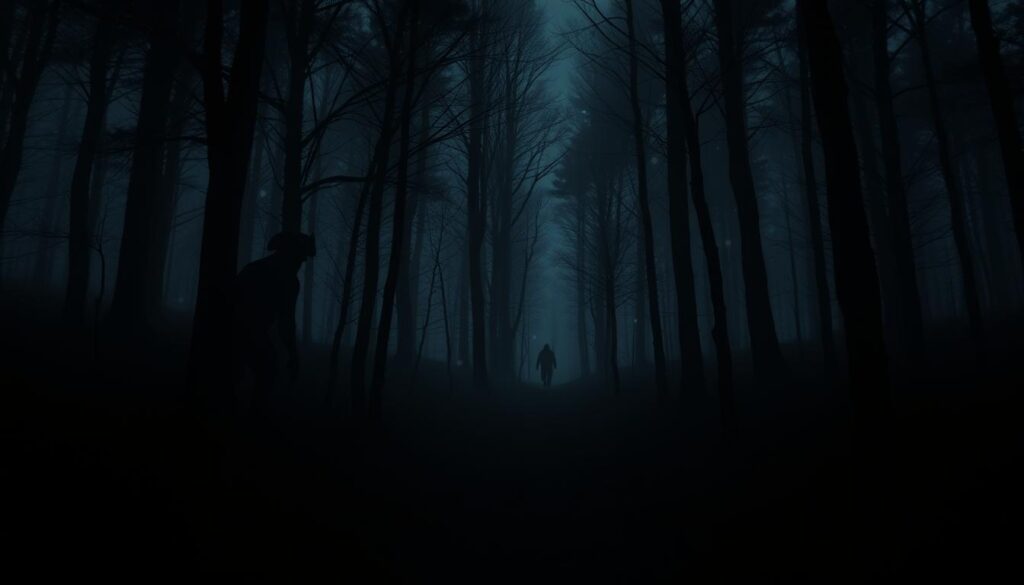
The Minnesota Dogman presents an intriguing challenge to investigators. Eyewitness descriptions depict it as a bipedal creature ranging from 7 to 9 feet tall. Despite a plethora of reported sightings, physical evidence remains scarce. A lack of independent verification for claims related to the Dogman raises questions about confirmation bias, where individuals may misidentify known creatures such as bears or large dogs in the heat of the moment.
These personal accounts, while sometimes controversial, are invaluable to the ongoing quest to understand the mysteries of cryptids. They propel investigations, challenge perceptions, and ignite imaginations regarding the enigmatic beings lurking within our folklore.
Exploring Cryptid Habitat and Conservation Efforts
Engaging in habitat exploration reveals the intriguing ecosystems that cryptids inhabit. Investigating these elusive areas allows for a better understanding of the delicate balance between mystery and reality in environmental conservation. Cryptids, often misunderstood, play a role in biodiversity. Your exploration can illuminate how these creatures connect with various species and their habitats.
Conservation efforts aimed at protecting these environments significantly impact ecological health. By safeguarding the locales where cryptids are said to reside, one benefits not only the creatures themselves but also the entire ecosystem. Without such efforts, the ongoing degradation of these habitats threatens numerous species and disrupts intricate ecological systems.
For instance, many believe that the legend of Bigfoot, often spotted in forests across North America, exemplifies how local cultures intertwine with biodiversity. These habitats serve as critical biomes for wildlife, making protection efforts paramount. Additionally, the increasing temperature of regions like Loch Ness prompts concerns regarding the species diversity in freshwater ecosystems. You may be surprised to discover how threats such as climate change can alter the natural environment, affecting both known species and potential cryptids.

Understanding the connection between cryptids and their habitats emphasizes the importance of ecological impact in conservation. Many humanoid legends, such as that of the Chupacabra, highlight the necessity of protecting these ecosystems from further encroachment. Engaging in conservation initiatives increases public awareness and encourages communities to actively participate in habitat preservation.
| Cryptid | Habitat | Impact of Conservation Efforts |
|---|---|---|
| Bigfoot | Forested Regions | Preserves biodiversity and prevents habitat destruction. |
| Yeti | Himalayan Mountains | Helps maintain delicate alpine ecosystems. |
| Loch Ness Monster | Loch Ness | Protects freshwater biodiversity against pollution. |
| Chupacabra | Latin America and Southern U.S. | Supports community efforts in wildlife protection. |
Through your commitment to habitat exploration and supporting conservation efforts, advocating for biodiversity becomes a meaningful pursuit. The relationship between cryptids and ecological stewardship highlights how exploration can lead to positive changes within our environment. Engaging in these areas fosters appreciation and respect for the world’s mysteries while ensuring that future generations also benefit from these vital ecosystems.
The Future of Cryptozoology and Cryptid Exploration
The future of cryptozoology presents an exciting landscape defined by exploration and scientific advancements. As technology continues to evolve, researchers gain access to innovative tools that enhance their ability to investigate cryptid sightings and expand their knowledge of uncharted territories. Modern methodologies, including DNA analysis and remote sensing technologies, transform how studies are conducted. This not only improves the quality of evidence collected but also opens up new pathways for exploration.
In recent years, citizen science has taken the forefront in encouraging broader participation in cryptozoological research. Platforms like the Bigfoot Field Researchers Organization serve as crucial resources, allowing enthusiasts to share findings and collaborate on investigations. This community-driven approach underscores the research potential of citizen involvement, fostering a collective effort toward understanding our elusive subjects.
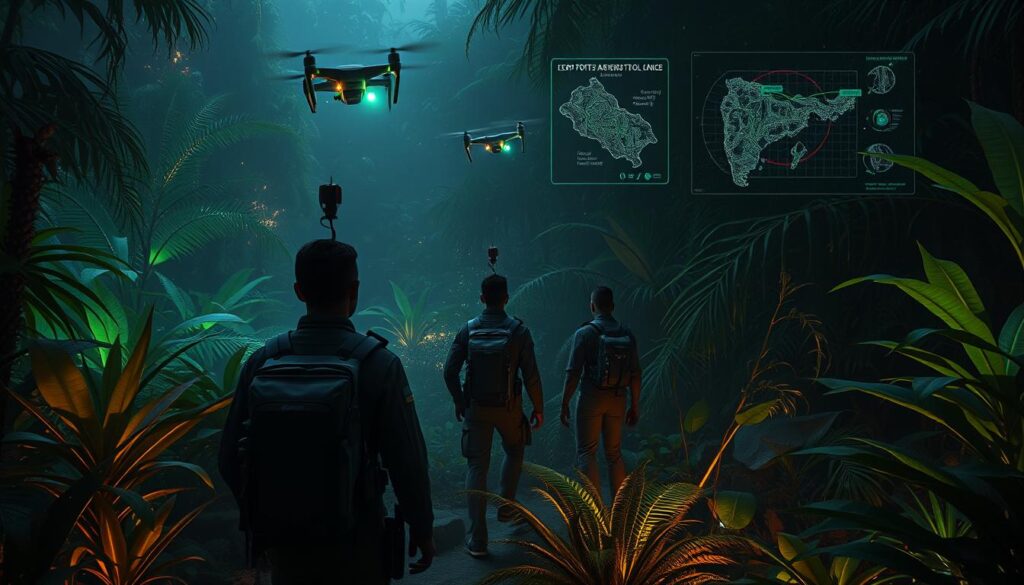
As you look towards the advancements in this field, consider the ongoing efforts to locate creatures long thought extinct, such as the Tasmanian Tiger. With numerous expeditions still taking place in Tasmania and mainland Australia, the prominence of cryptids in both scientific and cultural spheres remains strong. The possibility of discovering new flora and fauna exists alongside the thrill of encountering legendary beasts, underscoring the dynamic interplay between mythology and biology.
The continuous discovery of approximately 18,000 new species each year, albeit mostly small or less publicized, signals the ongoing need for exploration. Notable finds, like the saola, emphasize that what begins as a cryptid can sometimes lead to groundbreaking scientific revelations. The increasing interest in deep-sea ecosystems and even cybersecurity presents new realms for exploration. As digital creatures, much like the concept of creepypasta, thrive online, you can see how the frontier of cryptozoology might expand into both terrestrial and theoretical domains.
| Exploration Area | Research Potential | Notable Discoveries |
|---|---|---|
| Forests | Identifying rare species | Saola (1992) |
| Oceans | Discovering deep-sea life | Giant Squid sightings |
| Remote Habitats | Tracking elusive creatures | Tasmanian Tiger (expeditions ongoing) |
| Digital Landscape | Investigating myth-based phenomena | Creepypasta culture |
The future of cryptozoology lies at the intersection of exploration, scientific innovation, and an ever-growing enthusiasm for the unknown. As research advances, you might find that the allure of cryptids evolves into a more profound understanding of the biodiversity surrounding us, inviting anyone with curiosity to partake in this fascinating journey.
Benefits of Understanding Cryptid Mysteries
Exploring cryptid mysteries offers numerous benefits that extend well beyond mere fascination. Engaging with these enigmatic creatures enhances your understanding of folklore and promotes ecological awareness. When you delve into cryptid lore, you spark curiosity about the environment where these legendary beings are said to dwell.
Cryptids like Bigfoot, the Loch Ness Monster, and the Chupacabra serve as portals to scientific discovery. Investigating these creatures often leads researchers to examine habitats, ecosystems, and conservation efforts in a new light. For instance, the Pacific Northwest’s temperate rainforests, often associated with Bigfoot sightings, harbor a rich biodiversity worth protecting.
- Enhances scientific inquiry: The pursuit of understanding these creatures stimulates research methodologies that may uncover new scientific insights.
- Promotes conservation: Fascination with cryptids can drive conservation efforts, protecting endangered habitats tied to their legends.
- Encourages community engagement: The stories of these creatures foster local traditions and bring communities together for sharing experiences and knowledge.
Through this lens of exploration, you gain a greater appreciation for nature’s mysteries and the interplay between myth and reality. By encouraging curiosity and a willingness to learn, the study of cryptids can lead to a deeper level of understanding and respect for our environment.
Conclusion
In conclusion, the journey into cryptid mysteries reveals not only the wonders of the natural world but also the importance of exploration that drives human curiosity. With over 20 lake monsters reported in Canada and legends deeply rooted in indigenous cultures, it becomes clear that these tales foster a sense of connection to our environment. Engaging with the narratives surrounding these mysterious creatures enriches our understanding of history and anthropology while highlighting cultural significance.
As technological advancements continue to evolve, including innovations like drones and environmental DNA analysis, the potential for discovery in cryptozoology expands significantly. Future insights into the enigmatic beings across the globe may lead to groundbreaking findings that bridge folklore and science. Each new expedition provides an opportunity for environmental awareness, ensuring that as we explore, we also commit to preserving the delicate ecosystems that harbor these elusive residents.
Your journey into the world of cryptid mysteries is just beginning. Every legend holds the promise of untold stories, reminding you that exploration remains a vital aspect of the human experience. As we uncover the truth behind these myths, the allure of the unknown will continue to spark your adventures, igniting a passion for the fascinating and often bewildering creatures that inhabit our planet.
FAQ
What is cryptozoology?
Why are people fascinated by cryptids?
What are some famous cryptids?
How do cryptozoologists investigate cryptid sightings?
What challenges do cryptozoologists face?
How does technology play a role in cryptozoology?
Can personal accounts of sightings be trusted?
How do cryptid legends impact society?
What is the future of cryptozoological research?
Why are cryptid mysteries important?
monsters
Exploring the Mysteries of Supernatural Lore
Delve into the enigmatic world of supernatural lore and uncover the secrets behind hauntings, urban legends, and eerie folklore.
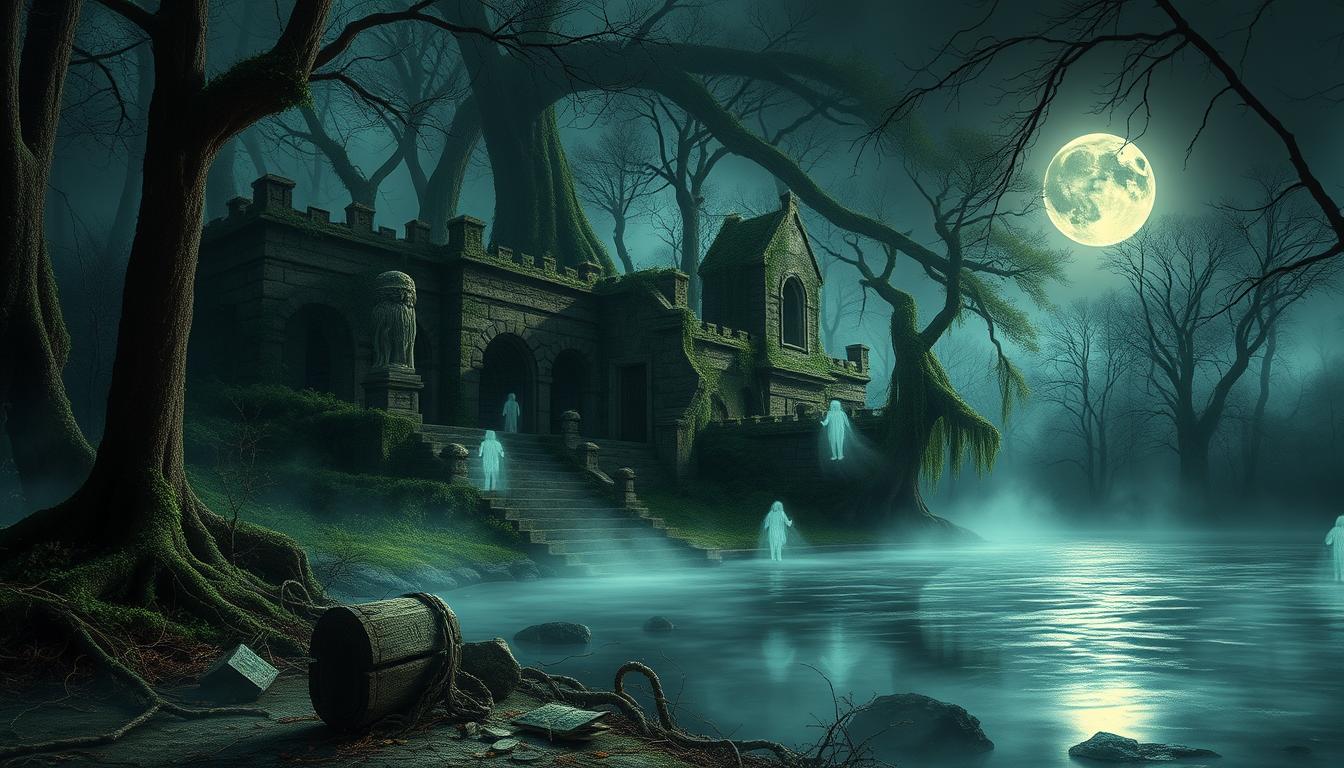
Have you ever found yourself captivated by the eerie stillness of a foggy night or the whispered legends that linger in the tales of your hometown? The world around us is rich with layers of mystery, and our fascination with supernatural lore invites you to explore the unknown. There’s something profoundly human about seeking connections with the unseen, whether it’s through stories of hauntings in haunted places or the puzzling phenomena that seem to defy explanation. Each legend holds a piece of our collective imagination, offering insights into our fears, desires, and the eternal search for answers that reside beyond the veil of reality.
As you embark on this journey, prepare to dive into the realms of urban legends and ghostly encounters that shape the world of folklore. Supernatural lore not only enriches literature but also reflects our cultural beliefs and values through the ages. Let’s unravel these threads together, an invitation to engage with the facets of human experience that link the mystical, the magical, and the deeply personal. What stories whisper to you from the shadows?
Key Takeaways
- Supernatural lore weaves intricate tales that connect us to our collective imagination.
- The origins of supernatural beliefs often reflect cultural values and fears.
- Haunted places serve as a backdrop for exploring human experiences with the paranormal.
- Urban legends play a crucial role in shaping our understanding of the mysteries around us.
- Folklore traditions reveal regional variations in supernatural beliefs and practices.
- The Gothic genre uses supernatural elements to create suspense and evoke emotional responses.
Understanding Supernatural Lore: An Introduction
Supernatural lore encompasses a rich tapestry of cultural beliefs and narratives. Rooted in the history of humanity, it often serves as a framework for understanding the inexplicable. An introductory guide to supernatural beliefs reveals how various cultures have utilized supernatural lore to explain natural events, moral lessons, and societal norms.
Stories of mythical creatures, ghosts, and legends form the core of this lore, deeply embedded in the cultural significance of communities around the world. They provide insight into fears, hopes, and the intricate relationship humans have with the unknown. These tales not only entertain but also serve as cautionary lessons, conveying essential truths through the veil of myth.
The diverse manifestations of supernatural lore—from ancient mythologies to modern interpretations—reflect collective human experiences. By examining these narratives, one gains a better understanding of how supernatural beliefs shape societal values and cultural identities.

| Type of Supernatural Lore | Description | Example |
|---|---|---|
| Myths | Tales that explain natural phenomena or cultural practices | Creation myths |
| Legends | Historical narratives embellished with supernatural elements | King Arthur and the Knights of the Round Table |
| Folklore | Traditions passed down orally, often reflecting societal values | Urban legends |
| Ghost Stories | Tales of spirits interacting with the living | Haunted locations |
The Origins of Supernatural Beliefs
Supernatural beliefs trace their roots back to humanity’s early efforts to make sense of a chaotic existence. Across various cultures, people have developed myths and legends that explain natural phenomena, reduce fears associated with death, and forge connections with the spiritual realm. These stories often reflect the historical context of the periods in which they emerged, serving as cultural touchstones that resonate through time.
Psychologists argue that human psychology plays a crucial role in the formation of these beliefs. Aspects such as a hyperactive agency-detecting device (HADD) influence how individuals perceive the world, leading to a tendency to attribute purpose and intention to natural events. This cognitive predisposition can create a strong inclination toward supernatural explanations, further enriching existing narratives.
Research involving evolutionary perspectives offers insights into the origins of supernatural beliefs. Studies by notable psychologists indicate that elements of belief systems may be evolutionary by-products, designed to enhance group cohesion and cooperation. In this light, supernatural beliefs can be seen as adaptations that allowed early humans to thrive in social settings.

| Aspect | Description |
|---|---|
| Primitive Beliefs | Associations of uncanny elements with sacred or numinous power. |
| Higher Religions | Make distinctions between sacred and profane, natural and supernatural. |
| Radical Division | Posits a final coincidence between the natural and the supernatural. |
| Buddhism | Identifies total distinction between life and Nirvāṇa. |
| Eschatological Religions | Emphasize a dichotomy between old and new aeons. |
Understanding the origins of supernatural beliefs involves a multi-faceted exploration of cultural, psychological, and historical perspectives. Each element contributes to a rich tapestry of human experience, showing how past interpretations shape present beliefs and practices.
Minoan Civilization: Eerie Legends and Myths
The Minoan civilization, which flourished on the island of Crete from 3500 to 1100 BCE, is a fascinating blend of historical achievements and supernatural lore. This ancient culture has cultivated numerous eerie legends and myths that continue to intrigue modern audiences. The tales originating from this civilization, particularly those related to the Minotaur legend, highlight their unique approach to the unexplained and the divine.
The Legend of the Minotaur and the Labyrinth
One of the most famous stories from the Minoan civilization is the Minotaur legend, which tells of a creature that was half-man and half-bull. It resided in an elaborate labyrinth designed by Daedalus, a structure that some believe symbolizes a gateway to the supernatural. The legend reveals the darker aspects of human nature and speaks to the Minoans’ fascination with hybrid creatures, tying them to their rich lore surrounding the sacred bull. The bull-leaping ceremonies practiced by the Minoans may have had deeper meanings tied to this legend, representing the struggle between civilization and primal instincts.
Ghostly Tales from Ancient Crete
The haunted ancient ruins of Crete are steeped in ghostly tales that echo the beliefs of the Minoans. Many ancient sites, like the Dikteon Cave, were viewed as portals to the Underworld and significant in their religious practices. These sacred caves often served as burial sites and were associated with spirits of ancestors, enhancing the perception of ghosts roaming the land. The Minoans held reverence for nature deities and ancestor worship, creating a deep-rooted belief that the dead remained connected to the living world. As you explore these ancient ruins, you may encounter whispers of these spectral presences, reminding visitors of the past that still lingers in the shadows.
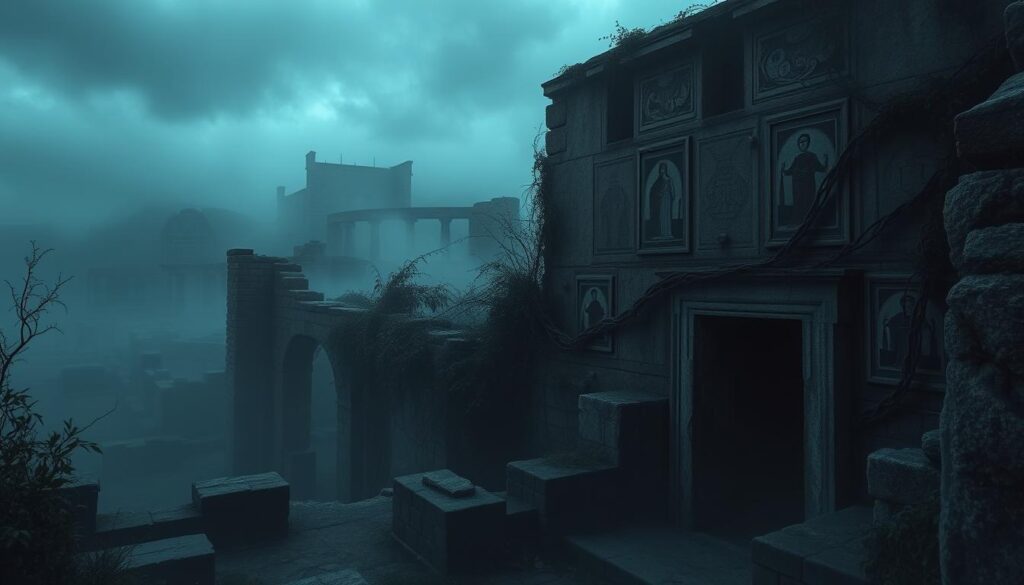
The Role of Ghosts in Supernatural Lore
Ghosts hold a significant position in the realm of supernatural lore. These entities are often viewed as spirits of deceased humans or animals who remain tethered to the earthly realm due to unresolved issues or unfinished business. Their behavior reflects the experiences and circumstances from their lives, which makes some spirits potentially dangerous as they linger longer on Earth.
Common Ghostly Encounters
Many individuals recount their own ghostly encounters in various settings, often describing eerie feelings, cold spots, or sudden changes in their environment. Some compelling examples include:
- Apparitions appearing suddenly during quiet moments.
- Whispers that seem to come from nowhere in supposedly haunted locations.
- Objects moving independently, a common manifestation of poltergeist activity.
These experiences align with frequent paranormal investigations, where ghost hunters seek to capture evidence of these entities, demonstrating that ghosts are among the most commonly reported phenomena across the globe.
The Connection Between Ghosts and Urban Legends
Ghosts frequently intertwine with urban legends, creating captivating tales that can distort reality. Many of these legends function as cautionary tales embedded in cultural fears, showcasing societal anxieties about death, loss, and the unknown. Notable elements often found in these stories include:
- Legends of haunted houses where victims fell to tragic circumstances.
- Tales of cursed objects believed to harbor vengeful spirits.
- Accounts of sightings in locations known for their grim histories.
These narratives fuel curiosity while serving as reminders of past traumas, effectively bridging the gap between history and folklore. Ghosts, in this context, are more than mere spectral beings; they become symbols of collective cultural fears and supernatural intrigue.

| Type of Ghost | Characteristics | Common Stories |
|---|---|---|
| Vengeful Spirit | Seeks revenge on the living | Haunted houses, tragic deaths |
| Poltergeist | Causes uncontrollable physical disturbances | Moving objects, loud noises |
| Death Echo | Resonates the moments leading to their death | Replaying tragic events at the site of death |
| Revenant | Returns to seek resolution or revenge | Stories of individuals returning to finish business |
These classifications and stories highlight the multifaceted role ghosts play in supernatural lore, making the exploration of their influence both compelling and essential to understanding the human fascination with the afterlife.
Haunted Places: Exploring the Unknown
The fascination with haunted places often intertwines history, folklore, and the paranormal. You may find yourself intrigued by the eerie tales associated with famous haunted locations across the United States. From historic hotels to abandoned asylums, each site carries its own stories of spectral encounters and unsettling occurrences. The narratives shared by explorers and adventurers amplify the allure of these places, inviting paranormal investigations into their mysterious happenings.
Famous Haunted Locations Across the United States
Several iconic locations in the U.S. have earned their reputation for ghostly phenomena. Notable sites include:
- The Stanley Hotel in Colorado, renowned for its ghostly inhabitants.
- La Posada in Santa Fe, New Mexico, where the spirit of Julia Staab is said to linger.
- Winchester Mystery House in California, filled with oddities and tales of restless spirits.
During paranormal investigations at these sites, enthusiasts often recount their own chilling experiences, adding depth to the legends surrounding these haunted places. You might learn about incidents like the eerie presence felt by Sir Ranulph Fiennes’ team during their 1980 expedition to Ryvingen Mountain. This event highlights how even in isolated environments, such as Antarctic huts, explorers have reported unsettling feelings of being watched.
The Science Behind Haunted Experiences
While these stories capture the imagination, scientific explanations also offer insight into haunted experiences. Various studies have suggested that psychological factors can lead individuals to perceive an unexplained presence. Factors such as environmental influences and sensory deprivation often play a critical role.
| Factors Influencing Haunted Experiences | Potential Effects |
|---|---|
| Isolation | Increased feelings of loneliness or anxiety |
| Low Frequencies | Can induce feelings of unease or fear |
| Darkness | Heightened awareness of surroundings, leading to paranoia |
Books like Ghostland: In Search of a Haunted Country provide fascinating insights into haunted places and narratives of paranormal encounters. With a growing interest in themes like dark tourism, where physical reminders of past tragedies are explored, the connection between societal legacies and ghost stories becomes increasingly evident. Ultimately, the blend of cultural perspectives around haunting experiences contributes to the continuing appeal of these famous haunted locations.
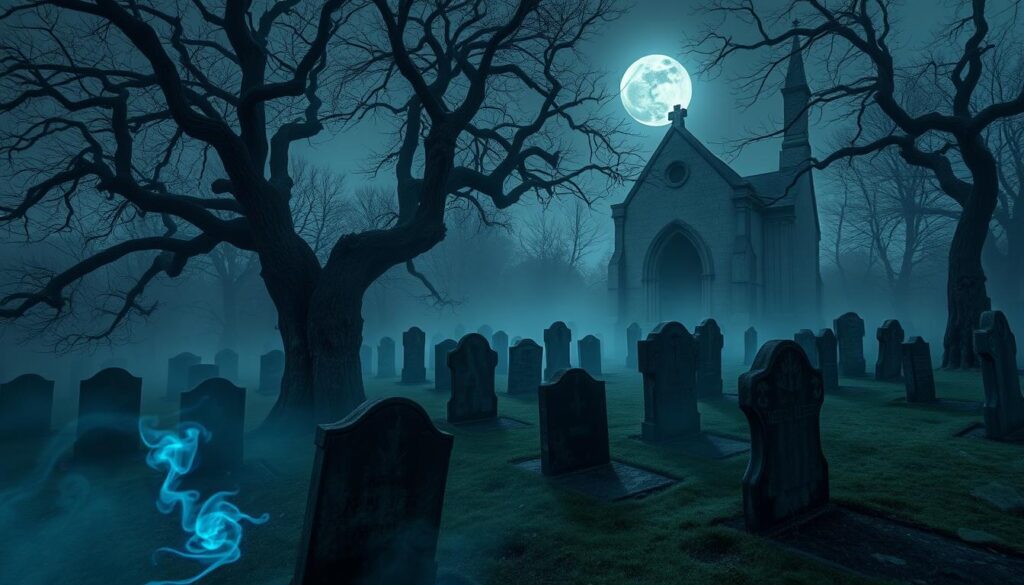
Paranormal Activity: What It Means
Paranormal activity refers to occurrences that are inexplicable by conventional means, drawing interest from both researchers and enthusiasts. These mystical events challenge your understanding of reality and often blur the lines of what science considers factual. Individual interpretations of paranormal activity can shape societal beliefs and provoke deeper inquiries into the unknown.
The success of films centered around paranormal activity, such as “Paranormal Activity,” released on September 25, 2009, highlights societal fascinations. This haunting film earned nearly $108 million in the U.S. market alone, garnering a total worldwide gross of $194.2 million. The filmmakers employed a unique approach by using a home video camera to enhance authenticity, making the supernatural elements more relatable for the audience.
The allure of paranormal activity often leads to a variety of interpretations of supernatural events. These interpretations can stem from personal experiences or popular culture influence. The portrayal of supernatural events in media can spark public interest, encouraging exploration beyond established scientific explanations. Often dismissed, these experiences invite individuals to reconsider the boundaries of their beliefs.

This fascinating field continues to evolve as more people report their encounters, inviting discussions that delve into metaphysical realms. Analyzing these interpretations not only broadens understanding but also enriches dialogue about life’s mysterious aspects.
| Film Title | Release Date | U.S. Box Office Earnings | Worldwide Box Office Earnings | Budget |
|---|---|---|---|---|
| Paranormal Activity | September 25, 2009 | $108 million | $194.2 million | $15,000 + $200,000 (post-production) |
Mythical Creatures in Supernatural Lore
Mythical creatures have fascinated people for centuries, serving as symbols and reflections of our deepest fears and beliefs. These enigmatic beings often populate folklore traditions across various cultures, embodying the essence of cultural mythology. They reveal insights into human nature and societal values, echoing historical contexts and inexplicable phenomena.
Folklores of Famous Mythical Beings
Numerous mythical creatures emerge from folklore traditions worldwide, their stories often intricately woven into the narrative fabric of cultural mythology. For instance, the Wendigo from Algonquian lore represents the dangers of greed and starvation. Other notable beings, like banshees and rakshasas, illustrate the diverse portrayal of supernatural entities throughout the seasons of popular media. Many of these creatures, depicted vividly on screen, showcase their unique traits through various actors, providing a rich visual experience.
The Legacy of Supernatural Creatures in Culture
The legacy of these supernatural beings significantly impacts how they shape cultural mythology. Different occupations and affiliations attributed to mythical creatures not only enhance their narratives but also offer insights into the moral and ethical struggles faced in our lives. These representations echo through the ages, leaving a lasting impression on art, literature, and contemporary storytelling. This endurance of mythical creatures in various regions, including Africa and Europe, emphasizes the universal appeal and deep-rooted nature of these tales.

Urban Legends: The Intersection of Fact and Fiction
Urban legends offer a captivating glimpse into the blend of *fact vs. fiction*, often emerging from real-life events and evolving into extraordinary tales over time. These stories become part of *cultural narratives*, serving various functions, from cautionary tales to explanations of everyday occurrences. Analyzing urban legends reveals how they resonate profoundly within different communities, reflecting societal fears and collective beliefs.
For instance, the prevalence of certain urban legends, such as the “Babysitter and the Man Upstairs” and “The Vanishing Hitchhiker,” illustrates *suburban fears* regarding safety and vulnerability. These tales often fuel anxieties, as they speak to deeply ingrained concerns about trust and security in one’s environment. Researchers have found a weak to moderate association between urban legends and paranormal beliefs, highlighting that these stories can shape and reflect the way groups view the unknown.

Social media significantly amplifies the reach of urban legends, allowing them to spread rapidly and gain credibility through shares and likes. Algorithms often create echo chambers, exposing users to information that aligns with their established beliefs, which further strengthens the appeal of these narratives. This environment fosters an atmosphere where *fact vs. fiction* becomes blurred, often leading to irrational behavior and societal consequences.
Belief in urban legends can serve as a coping mechanism for dealing with an unpredictable world. They provide a sense of control by framing complex realities into easily digestible stories. Encouraging critical thinking through resources dedicated to *fact-checking* helps mitigate the spread of misinformation, promoting a more nuanced understanding of these fascinating *cultural narratives*. Through critical engagement, individuals gain the tools to discern the lines separating myth from reality, enhancing their understanding of urban legends in society.
Folklore Traditions: Connecting Culture and Supernatural Beliefs
Folklore traditions play an essential role in linking cultural significance with supernatural beliefs across diverse societies. These narratives not only express community identity but also offer insight into how cultures perceive and interpret the supernatural. By exploring different global practices, one can uncover the rich tapestry of stories that reflect a society’s values and existential questions.
The Role of Folklore in Understanding Supernatural Lore
Engaging with folklore traditions provides a deeper understanding of supernatural lore. In regions like Japan, for instance, the yōkai culture—encompassing entities such as bakemono, mononoke, and yurei—illustrates how transformations and ghostly figures shape social beliefs. The Japanese supernatural exhibition at the Art Gallery of NSW showcases this cultural significance, spanning centuries from the Edo Period to contemporary interpretations. Key masters of the Ukiyo-e Period, like Katsushika Hokusai, further enrich this understanding through their artistic expressions.
Regional Variations in Folklore Traditions
Folklore traditions vary significantly by region, each offering unique narratives and practices. The Western Himalayas serve as an intriguing example, where a combination of pre-Brahmanical, Brahmanical, and Buddhist beliefs creates a complex religious environment. The local population interacts with both benevolent and malevolent spirits, reflecting an animistic worldview. This connection is evident in magical practices and rituals conducted by village intermediaries known as Gur, bridging the gap between the devotees and their deities.
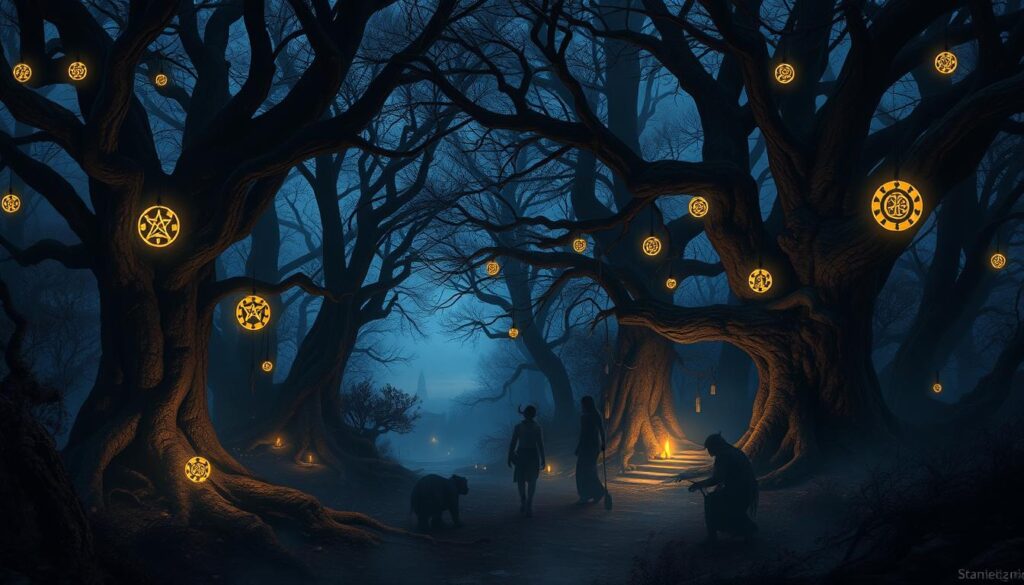
| Region | Folklore Traditions | Supernatural Beliefs |
|---|---|---|
| Japan | Yōkai culture, including bakemono and yurei | Concept of transforming beings and ghosts |
| Western Himalayas | Rich myths related to deities and rituals | Interaction with good and evil spirits |
| Global | Universal themes and archetypes in myths | Collective unconscious influencing beliefs |
Supernatural Beings and Their Cultural Impacts
Supernatural beings have significantly shaped various aspects of culture throughout history. These entities, often entwined with fear and reverence, play a crucial role in defining collective beliefs and identities. In mythical studies, scholars explore how the presence of supernatural beings in folklore, literature, and art reflects societal values. The cultural significance of these beings goes beyond mere stories; they embody shared fears, moral lessons, and creativity.
Throughout different civilizations, supernatural beings appear in countless myths, symbolizing natural forces or human qualities. From deities of ancient religions to modern fictional characters, such entities influence social norms and traditions. For instance, a deep connection exists between supernatural beings and religious beliefs, revealing their role in shaping spiritual understandings across cultures.
In examining the depth of supernatural lore, mythical studies illuminate how cultures have constructed narratives to explain the inexplicable. These stories often serve to bond communities, providing a common heritage and shared experiences. Analyzing these narratives helps unveil the underlying values and concerns of societies, highlighting the enduring impact of supernatural beings on cultural evolution.

The Rise of Interest in Supernatural Lore Today
The modern interest in supernatural lore has found a vibrant expression through various media platforms. Television shows and films have seamlessly integrated themes of the paranormal, drawing viewers into narratives that extend beyond the everyday. A prime example is Supernatural, which aired for an impressive 15 seasons from 2005 to 2020. This show not only captivated audiences but also became the longest-running American live-action fantasy series, with a loyal fanbase that remains active today.
By utilizing social media platforms, enthusiasts are now engaging in contemporary explorations of supernatural phenomena, sharing experiences and theories. The Supernatural subreddit, with 118k subscribers, is a testament to this growing community, showcasing a wealth of fanworks. In addition, sites like Archive of Our Own (AO3) exhibit a remarkable increase in fan-generated content, with over 92,000 works inspired by the series.
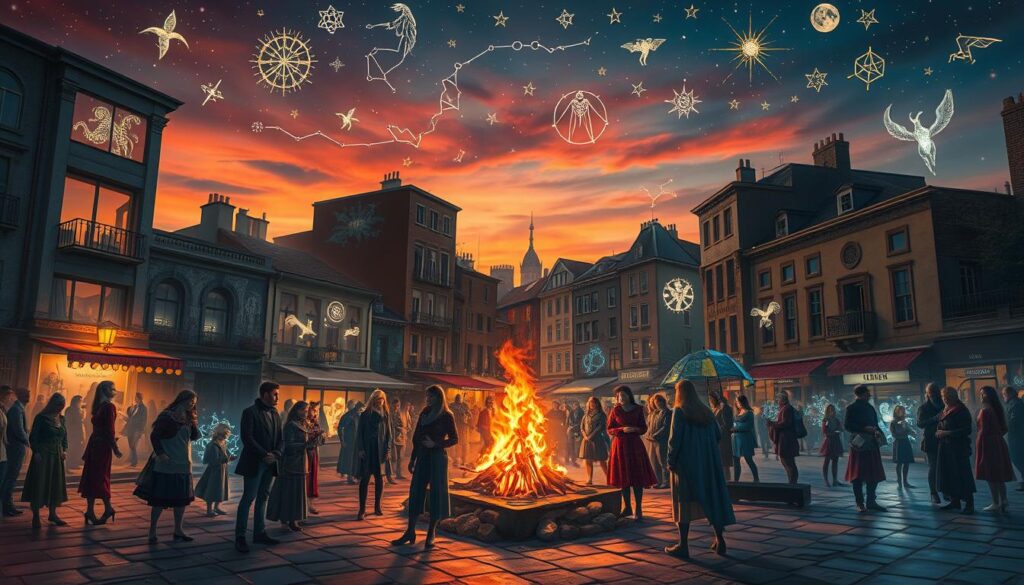
Social movements and the complexity of modern society contribute significantly to the evolution of supernatural beliefs. Research indicates that supernatural explanations have been prevalent across varying cultures and histories, effectively addressing natural phenomena such as disease and disasters. The intertwining of supernatural elements with day-to-day life continues to spark curiosity and inquiry into age-old mysteries that still resonate today. As more people seek understanding within a chaotic world, the allure of the supernatural remains strong, fostering both intrigue and community.
Why People Are Drawn to the Supernatural
The fascination with the supernatural has captivated individuals for centuries. This intrigue often stems from a deep-seated search for meaning in a chaotic world. Many turn to supernatural beliefs to find structure and answers in life, reflecting both psychological and spiritual dimensions. These beliefs provide a lens through which you can explore your existence and the mysteries surrounding it.
The Search for Meaning in a Chaotic World
Your desire for meaning often amplifies in times of uncertainty. Throughout history, supernatural explanations have surfaced as comforting narratives that help make sense of complex life events. For instance, the analysis of more than 100 cultures revealed that a remarkable 92% attributed diseases to supernatural causes, demonstrating an innate inclination to find connections and explanations in the unexplainable.
Spiritual Significance and the Afterlife
The pursuit of spiritual insights plays a pivotal role in this curiosity. Many find hope within tales of the afterlife and spiritual realms, offering comfort during difficult times. In literature and media, supernatural themes often allow writers to delve into significant societal issues while encouraging you to think critically about your beliefs. This reflects a broader trend where the supernatural serves as a vehicle for existential questioning, often leading to new ideas and perspectives.

Fear and Fun: The Appeal of Supernatural Stories
The allure of supernatural narratives thrives on the thrilling combination of fear and fun. This interplay captivates audiences, sparking adrenaline while providing a safe distance from real danger. The rich tapestry of gothic literature weaves intricate tales that stir emotional responses. As readers delve into these eerie worlds, they encounter creatures and situations that challenge their perceptions of reality.
The Role of Gothic Literature in Shaping Supernatural Insights
Gothic literature serves as a crucial lens for examining our fears and fascinations. Notable works delve into dark themes, reflecting societal anxieties and exploring the human condition. The effectiveness of these narratives can be linked to several underlying psychological factors:
- Tension: The buildup of suspense intensifies emotional engagement.
- Relevance: Themes often resonate with personal or cultural experiences.
- Unrealism: The fantastical elements allow for detachment from real-life fears.
Research indicates that roughly 10% of the population actively seeks the adrenaline rush tied to the horror genre. This segment finds pleasure in the physical and emotional release that follows moments of fright. 
Visitors to haunted attractions or readers of gothic novels often share common emotions. Young children, with their limited grasp of reality, engage deeply with spooky themes, while teens and young adults revel in slasher films and supernatural stories. Themes of fear, such as the spectral horror of vampires and the dread of zombies, have origins grounded in various cultures, reflecting ancient fears reinterpreted for modern audiences. These supernatural narratives do not merely entertain; they echo existential concerns, like the pervasive fear of death and societal anxieties about technology.
Supernatural stories continue to have relevance. Their enduring nature suggests a collective yearning for escape and contemplation of life’s mysteries. Amidst their eerie allure, readers find solace in understanding their own fears, navigating through the unsettling landscapes crafted by gothic literature.
| Psychological Factors | Description |
|---|---|
| Tension | Builds suspense and emotional engagement. |
| Relevance | Connects with personal or cultural experiences. |
| Unrealism | Encourages detachment from real-world fears. |
The Evolution of Supernatural Lore in Modern Times
The landscape of supernatural lore continues to evolve, shaped by technological advancements and societal changes. As you navigate this dynamic world, the impact of social media emerges as a significant force, influencing beliefs and discussions surrounding the supernatural. Platforms like Instagram and Twitter enable individuals to share experiences, report sightings, and create online communities dedicated to these fascinating subjects. This interconnectedness fosters both engagement and skepticism concerning old and new legends.
The Impact of Social Media on Belief Systems
Within this digital realm, supernatural stories circulate rapidly, capturing public imagination. Many users leverage social media to explore concepts such as ghost hunting, urban legends, and mythical creatures, broadening the audience’s engagement with existing folklore while introducing contemporary interpretations. The ability to share multimedia content enhances these discussions, letting participants deepen their understanding of supernatural lore while challenging traditional narratives.
Modern Representations of Supernatural Beings
Contemporary representations of supernatural beings in film and literature showcase a blend of traditional lore and modern influences. Popular television series like *Supernatural* have created a resonant mythos, featuring characters who reflect today’s society. The Winchester brothers, for example, represent a new interpretation of heroic archetypes, blending emotional depth and inner conflict to resonate with viewers. Their journey illustrates the cultural evolution of supernatural beliefs and the myriad forms these stories can take.
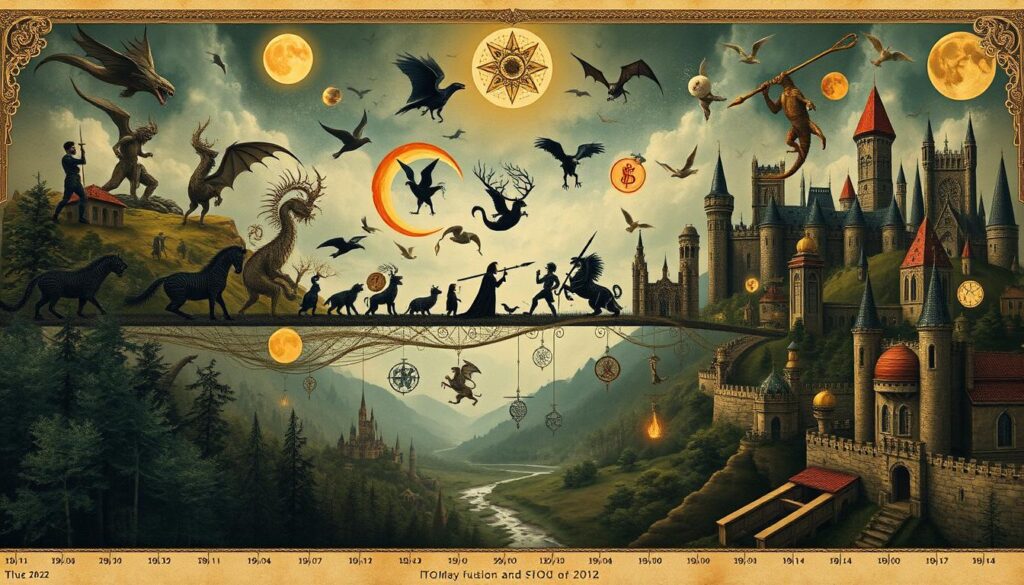
The influence of social media extends beyond personal accounts. Each character, from Sam and Dean to Castiel and Jo Harvelle, engages audiences while challenging traditional roles within the narrative. As the stories adapt, they reflect changing societal values, showcasing complexities of gender, morality, and heroism. The evolution of supernatural lore manifests through these modern interpretations, proving that the fascination with the mysterious and unknown remains deeply rooted within the global consciousness.
| Aspect | Traditional Beliefs | Modern Representations |
|---|---|---|
| Character Archetypes | Traditional Heroes | Complex Characters (e.g., Dean as an anti-hero) |
| Supernatural Entities | Folklore Creatures | Mythical Beings in Media (e.g., Slender Man) |
| Gender Roles | Damsels in Distress | Empowered Female Heroes (e.g., Jo Harvelle) |
| Storytelling Methods | Oral Traditions | Social Media and Digital Narratives |
| Community Engagement | Local Folklore Circles | Global Online Communities |
Conclusion
The exploration of supernatural lore reveals the depths of humanity’s fascination with the mysterious and the unknown. Throughout this article, we’ve delved into various aspects that underscore the conclusions on supernatural lore, highlighting its lasting impact across various cultures and historical periods. We’ve seen how themes of fear, myth, and the quest for understanding intertwine, shaping not only individual identities but also collective beliefs.
As we consider the enduring legacy of supernatural stories, such as the beloved series “Supernatural,” which captivated audiences for nearly two decades, it becomes clear that these narratives resonate deeply. They reflect our shared efforts to negotiate meaning amidst chaos, embodying our intrinsic curiosity about death, the afterlife, and what lies beyond. The characters’ journeys and their ultimate fates leave indelible impressions, reinforcing the idea that these tales serve vital roles in our psychological and cultural landscapes.
Ultimately, the mysteries of supernatural lore offer insights into both personal and societal narratives. They invite you to question, to dream, and to explore beyond the confines of reality. As we continue to engage with supernatural elements in literature, film, and folklore, their significance presents opportunities for growth and understanding in a world that often feels unpredictable and overwhelming.
FAQ
What is supernatural lore?
Why do different cultures have their own supernatural beliefs?
What role do ghosts play in supernatural narratives?
Can you provide examples of famous haunted places?
What is paranormal activity?
What are some mythical creatures found in folklore?
How do urban legends differ from traditional folklore?
What is the significance of folklore in understanding supernatural beliefs?
How do supernatural beings influence art and literature?
How has interest in supernatural lore changed in modern times?
Why do people feel drawn to the supernatural?
What role does fear play in supernatural storytelling?
How does social media affect beliefs in the supernatural?
What are some examples of contemporary representations of supernatural beings?
monsters
Exploring Mysterious Monsters: Secrets Unveiled
Dive into the shadowy realm of mysterious monsters, uncovering the tales and truths behind these enigmatic creatures. Join the quest!
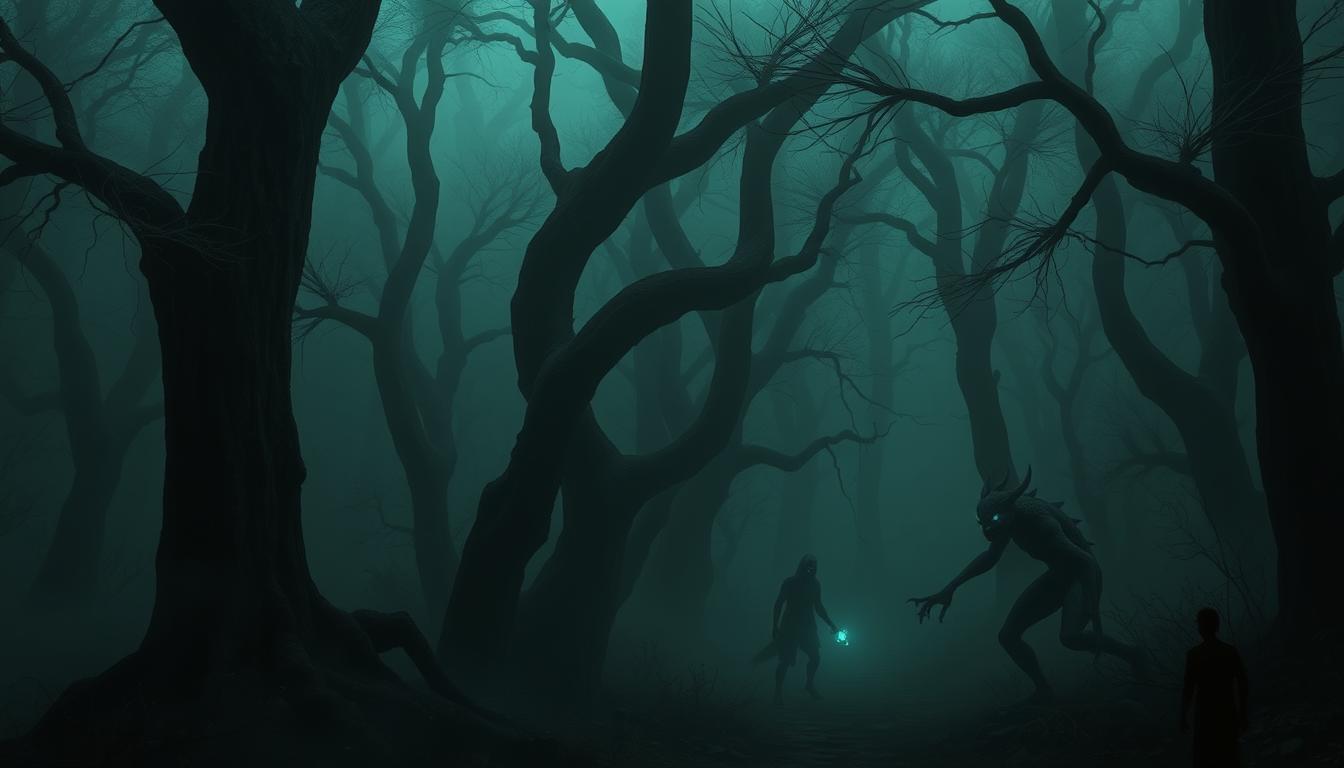
As children, many of us eagerly gathered around campfires, our imaginations ignited by tales of mysterious monsters and legendary creatures lurking just beyond the shadows. Those moments weren’t just about fear; they were about connection—families sharing thrills, friends huddling together, and the unforgettable mix of wonder and curiosity that these folklore tales inspire. Even as adults, the allure of the unknown continues to captivate our minds, drawing us into a world teeming with unexplained phenomena. Have you ever experienced that shiver of excitement at the thought of a cryptid slipping quietly through the trees, or felt a rush as you ponder the existence of creatures that defy explanation? This exploration of the realm of mysterious monsters promises to unveil the secrets that lie behind our most cherished myths and legends, inviting you to embark on a fascinating journey through time and imagination.
Key Takeaways
- Mysterious monsters, like the Chupacabra and Bigfoot, have captivated audiences for decades.
- The lore surrounding legendary creatures spans cultures, influencing storytelling and traditions worldwide.
- Encounters with the Yeti and Thunderbird showcase the rich tapestry of *folklore tales* in various cultures.
- The fascination with aquatic creatures, such as the Loch Ness Monster, persists in modern culture.
- Africa’s Congo Basin holds some of the most enigmatic myths, including the Mokele-Mbembe and the Mahamba.
The Allure of Mysterious Monsters
The enchantment surrounding mysterious monsters captures the imagination, allowing you to explore the depths of cultural significance across diverse societies. These legendary beings serve not only as fascinating subjects of tales but also embody deeper human fears and curiosities. Each culture contributes unique stories, resonating through time and space, merging realities and fantasies in a captivating dance.
Consider the legends of the Ozarks, where local wildlife inspires numerous sightings of myths. The tales evolve like the game of telephone, transforming as they are handed down generations. Cryptid legends can become local treasures, such as Momo, spotted in Louisiana, Missouri, in the 1970s, which sparked national interest and boosted tourism in the town.
The folklore of the Ozark Howler, a creature characterized by glowing eyes and horn-like features, illustrates how deep-rooted these narratives can become. With reports dating back to the 1950s and peaks in sightings between 2005 and 2010, this legendary being remains a beacon of regional folklore.

Encounters with creatures like the Enfield Monster also highlight enduring myths. From its unexpected sightings in a small farming community to the media frenzy that followed, such occurrences reveal the intersection of local legends and broad cultural narratives. Communities often rally around these tales, preserving their cultural significance and asserting their place in a collective memory.
The fascination with these beings illustrates a deeper quest for understanding the complexities of human emotion. Monsters often reflect our internal struggles, fears, and desires, creating a unique blend of reality and myth that continues to inspire awe in every listener.
Mythical Beasts: A Glimpse into History
Throughout history, mythical creatures have captured the human imagination, echoing through ancient tales and civilization myths. These legendary beasts go beyond mere folklore; they reflect the societal values, fears, and aspirations of their times. From the fearsome Medusa of Greek mythology, with her serpentine hair, to the powerful Minotaur lurking in the labyrinth, each creature tells a unique story rooted in the culture that birthed it.
The role of cultural artifacts in preserving these myths is significant. Manuscripts, sculptures, and artwork often depict legendary animals, serving as reminders of the stories that shape our understanding of the world. The Cyclopes, one-eyed giants from Greek lore, symbolize both strength and vulnerability, illustrating how these creatures often embody dualities within us. Medieval bestiaries further enriched the tapestry of mythical beings, blending real and fantastic creatures, imparting moral lessons along the way.
In the Americas, numerous sightings and legends have arisen over the years. For example, in Mobile, Alabama, fifty people reported encountering a half-wolf, half-woman creature in 1971. The well-known Mogollon Monster in Arizona, a towering seven-foot figure, conveys a different type of fear and intrigue. The White River Monster, often associated with the Loch Ness Monster, has been seen in the Arkansas River since its first recorded sighting in 1915. Reports about this cousin of mythical creatures have persisted into modern times, demonstrating a lasting fascination with legendary beasts.

These encounters not only showcase mythical beasts but also connect back to human culture. The stories surrounding the Fouke Monster and Rougarou reflect regional folklore that helps build community identity. Each of these creatures embodies regional characteristics, fears, and legends, weaving them into the fabric of social consciousness.
As you explore these ancient tales, keep in mind how they have shaped human understanding and influenced cultural artifacts throughout history. The allure of mythical beasts can offer a window into the beliefs and stories that have persisted through generations, uniting communities around shared wonder and mystery.
| Creature | Origin | Key Characteristics | First Recorded Sighting |
|---|---|---|---|
| Medusa | Greek Mythology | Female monster, snakes for hair | Unknown |
| Minotaur | Greek Mythology | Hybrid of man and bull | Unknown |
| Fouke Monster | Arkansas, USA | 10 feet tall, 800 pounds | 1946 |
| White River Monster | Arkansas, USA | Cousin of Loch Ness Monster | 1915 |
| Mogollon Monster | Arizona, USA | Ape-like, 7 feet tall | Unknown |
Mysterious Monsters of the Americas
Two cryptids dominate the lore of North American folklore, capturing the imaginations of people across the continent: the Chupacabra and Bigfoot. These creatures inspire mystery and fear through their respective tales of unexplained encounters.
Chupacabra: Terror in the Tropics
The Chupacabra has become a terrifying figure in folklore, notorious for preying on livestock. Reports and sightings, primarily from Puerto Rico and Mexico, depict it as a creature resembling a reptile with spikes along its back. Witnesses recount nights filled with nocturnal raids where goats and sheep fell victim to this cryptid. Emotional responses range from disbelief to sheer terror as farmers recount how they found their animals drained of blood.
Bigfoot: The Elusive Giant of North America
Bigfoot, also known as Sasquatch, stands as a legendary figure synonymous with North American wilderness. Sightings span across numerous states, with reports highlighting the creature’s massive size, often described as being anywhere from five to over ten feet tall. Intriguing encounters with Bigfoot often include detailed descriptions of its thick, dark fur and human-like footprints. The creature holds a significant place in the collective consciousness, inspiring documentaries and discussions about its existence, with “Monsters and Mysteries in America” detailing such legends across its three seasons. The series presented a rich tapestry of stories about these cryptids, including other fascinating creatures.

Legends from the Depths: Aquatic Creatures
Delving into the stories of aquatic creatures reveals a captivating world of marine mysteries and legends of the deep. Tales of the Loch Ness Monster and the giant squid have kept both enthusiasts and skeptics intrigued for generations. These aquatic cryptids embody the fear and fascination humanity holds for the unknown depths of the ocean.
Loch Ness Monster: Scotland’s Aquatic Enigma
The Loch Ness Monster, affectionately known as Nessie, is perhaps the most famous of sea monsters. Reported sightings date back centuries, contributing to the allure surrounding this mythical creature. Locals boast a cultural heritage intertwined with this enigma, as the monster continues to attract tourists to the Scottish Highlands. Your imagination might wander to ancient waters as you consider what lies beneath the surface of Loch Ness, where accounts of Nessie evoke an enduring sense of mystery.
Giant Squid: Terror of the Deep
Contrary to many beliefs, the giant squid is no mere figment of imagination. Japanese scientists verified the existence of this colossal creature, with females reaching lengths over fifty feet. This sea monster previously summoned fear and awe solely through tales. Its real presence underscores a relationship between myth and reality, reminding you that the depths of the ocean remain largely unexplored. From the grotesque to the unknown, the giant squid epitomizes the thrill of oceanic exploration.
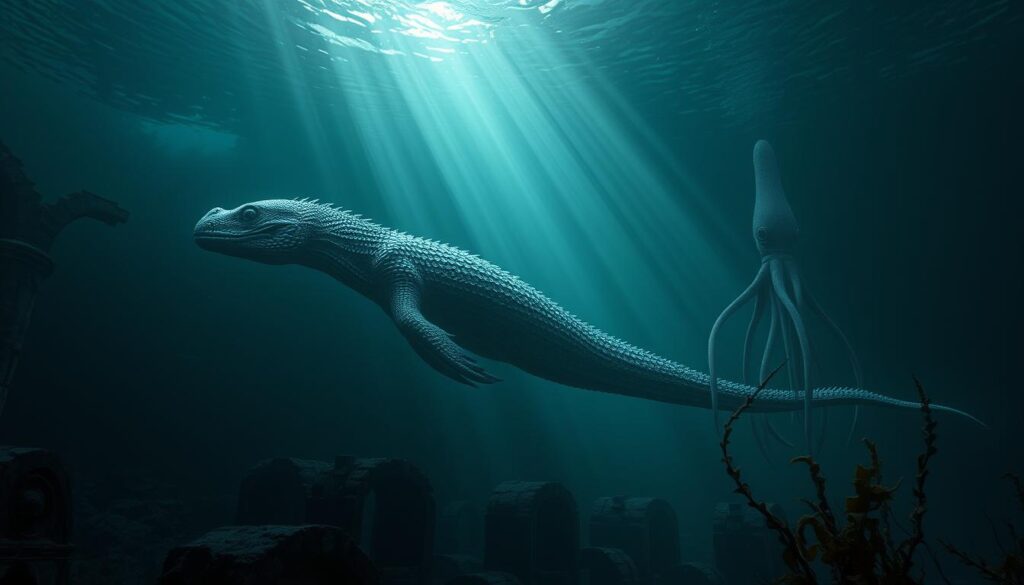
Legendary Creatures of the Skies
Diverse myths bloom within the realm of flying cryptids, showcasing fascinating creatures that capture human imagination. The Thunderbird and Mothman provide striking examples of how these majestic beings occupy a significant place in legendary lore and cultural significance. Both creatures reveal the intricate bond between nature, mythology, and human experience throughout various generations.
Thunderbird: A Native American Wonder
The Thunderbird, revered in Native American culture, embodies power and control over nature. This colossal bird is said to summon storms with the flapping of its wings, showcasing a crucial connection between the Plains peoples and their environment. Often depicted in art and storytelling, the Thunderbird represents strength and resilience, serving as a guardian spirit for numerous tribes. When exploring the cultural significance of this legend, one sees how deeply intertwined it is with the respect for nature and its abilities.
Mothman: Guardian of Point Pleasant?
Emerging from the foggy realms of modern folklore, the Mothman captivates the curiosity of onlookers in Point Pleasant, West Virginia. Witnesses describe this cryptid as a towering figure with enormous wings and glowing red eyes. Reports of Mothman sightings often coincide with unsettling events, suggesting a potential harbinger of doom. This dual nature of the Mothman—both guardian and omen—fuels discussions around its legendary lore, illustrating society’s fascination with mysterious figures that traverse the skies.

| Creature | Origin | Attributes | Cultural Significance |
|---|---|---|---|
| Thunderbird | Native American | Colossal bird, controllable weather | Symbol of strength and guardian spirit |
| Mothman | Point Pleasant, West Virginia | Large figure, glowing red eyes | Harbinger of doom or guardian entity |
The stories of these flying cryptids, Thunderbird and Mothman, enrich our understanding of legendary lore. As you delve into their tales, consider how such creatures continue to inspire awe and curiosity while shaping the cultural narratives passed down through generations.
Exploring the Mysteries of the Himalayas
The Yeti, often celebrated in tales and lore, serves as a prominent figure in the tapestry of Himalayan mysteries. Known as the Abominable Snowman, this legendary creature embodies the allure of unexplored regions, captivating adventurers and researchers alike. Sightings and stories surrounding the Yeti reflect cultural traditions and local folklore, which have influenced countless expeditions in pursuit of this cryptid legend.
Yeti: Guardian of the Peaks
Eyewitness accounts describe the Yeti as a tall, hairy creature, showcasing immense strength. The fascination with this beast grew significantly after Sir Edmund Hillary discovered giant footprints on Mount Everest in 1953, igniting interest in its potential existence. Despite numerous pursuits, definitive evidence remains elusive. A series of DNA analyses on alleged Yeti samples revealed that they predominantly matched the genetic profiles of known bear species, like the Asian black bear and Himalayan brown bear.
The myth of the Yeti extends beyond mere folklore. It deeply influences local economies, particularly in areas like Mechuka Valley in Arunachal Pradesh, where tourism thrives off the legend. This connection illustrates how cryptid legends can enrich cultural narratives while fostering economic opportunity.
The origins of the Yeti legend trace back to ancient times, influenced by the Bön faith, which revered a protective entity known as the Glacier Being. Local rituals included sacrifices, showcasing the creature’s importance within religious practices. The duality of the Yeti’s nature, often seen as both a guardian spirit and a dangerous foe, highlights the intricate balance within Himalayan mythology.
For many, the quest to experience the Yeti’s world continues to symbolize humanity’s desire to uncover mysteries of the wild. Shadowed by the magnificence of peaks like Mount Kailash and Kanchenjunga, this enigmatic guardian of the Himalayas endures in collective imagination.
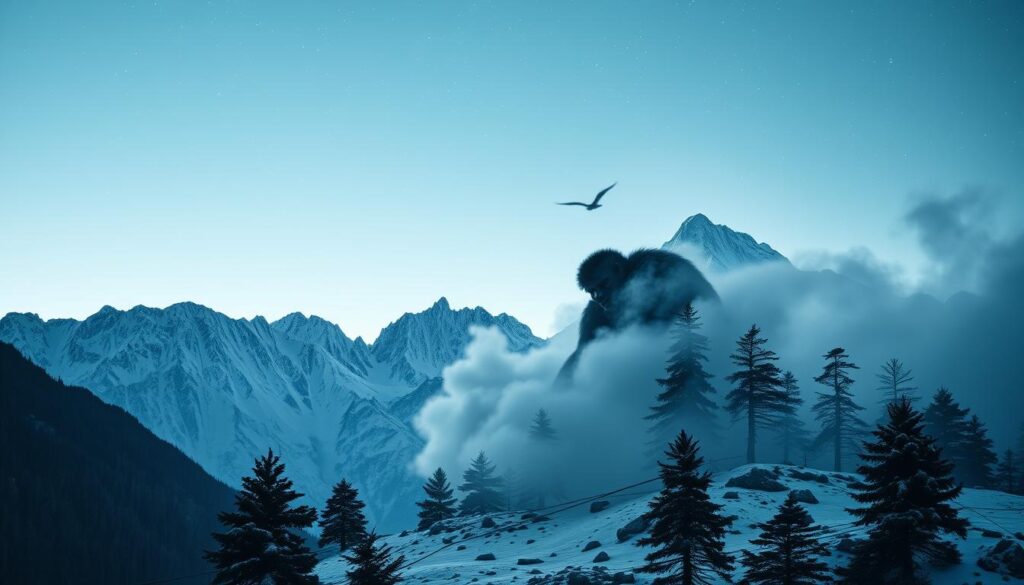
| Aspect | Details |
|---|---|
| Known As | Abominable Snowman |
| First Discovery | Footprints by Sir Edmund Hillary, 1953 |
| DNA Findings | Match with Asian black bears & Himalayan brown bears |
| Cultural Impact | Influences tourism in regions like Mechuka Valley |
| Mythological Roots | Connected to Bön faith and the Glacier Being |
Cryptids of Africa: Enigmatic Beasts of the Congo
The mysteries of the Congo Basin hold a wealth of intrigue, especially surrounding the legendary Mokele-Mbembe. Seen as a relic from the age of ancient creatures, this cryptid captures the imagination of adventurers and enthusiasts alike. The stories told by local tribes provide a glimpse into a world where cryptid sightings and African legends intertwine seamlessly.
Mokele-Mbembe, often described as a creature similar to a sauropod, has garnered attention since the early 1900s. In 1909, Carl Hagenbeck recorded reports of a bizarre half-elephant, half-dragon creature emerging from what is now Zimbabwe. This sparked a surge of interest in cryptids inhabiting the deep jungles of Africa. Subsequent explorations have intensified fascination, particularly German explorer Ludwig Freiherr von Stein zu Lausnitz’s expedition in 1913. He reported detailed accounts from locals referencing a monster residing in the Congo River.
Over the years, scientists and explorers have attempted to substantiate the existence of this creature. Notably, in 1981, biologist Dr. Roy Mackal led a team into the region to interview eyewitnesses. Despite their extensive efforts, they did not find concrete evidence. Congolese zoologist Marcellin Agnagna claimed to have captured footage of the Mokele-Mbembe during this time, though the results were ultimately disappointing when the film failed to develop.
These tales highlight the rich tapestry of African legends, reinforcing the belief that ancient creatures might still roam unexplored territories. While scientists typically classify these accounts as hoaxes or misidentifications of known animals, the possibility of undiscovered wildlife continues to entice many.
Listed below is a comparative overview of reported characteristics attributed to Mokele-Mbembe:
| Attribute | Details |
|---|---|
| Possible Length | 5 to 10 meters (16 to 32 feet) |
| Largest Reported Length | Up to 75 feet |
| Length of Neck | 1.6 to 3.3 meters (5 to 10 feet) |
| Length of Tail | 1.6 to 3.3 meters (5 to 10 feet) |
| Diameter of Tracks | 30 to 90 centimeters (1 to 3 feet) |
| Distance Between Tracks | 2.1 to 2.4 meters (7 to 8 feet) |
| Reported Habitat | Pools and swamps adjacent to rivers |
| Reported Sound | Snorts, howls, roars, rumbles, growls |
Despite the skepticism surrounding the validity of these cryptid sightings, stories of the Mokele-Mbembe continue to thrive, embodying the deep-seated human fascination with the unexplained and the allure of the unknown. Within the lush jungles and waterways of the Congo Basin, such legends remind us of the possibility that ancient creatures may still walk among us, concealed within the shadows.

Creatures of Myth and Magic: Werewolves and Vampires
The legends of werewolves and vampires are deeply embedded in mythology and folklore, revealing fascinating aspects of human desires, fears, and cultural anxieties. These supernatural beings have evolved over centuries, captivating audiences through stories and literature that examine the dualities of humanity and the mysteries lurking within the dark corners of our imagination.
Werewolves: The Beast Within
Werewolves represent the struggle between man and beast, embodying primal instincts and fears of losing control. The idea of transformation into a wolf during the full moon reflects anxiety about the savagery lurking beneath the surface of civilization. Different cultures portray werewolves in varied ways, such as the Vârcolac from Romanian folklore, showcasing a human’s ability to shift between forms. In some narratives, like that of the pricolici, these creatures emerge as undead souls with monstrous behaviors, blurring the lines between myth and reality.
Vampires: Immortal Beings of the Night
Vampire lore intertwines themes of seduction, mortality, and darkness, offering a glimpse into humanity’s fascination with immortality. Variations like the Moroi exhibit traits of both the living and the undead, embodying complex narratives surrounding power and desire. Across cultures, different mythological figures represent this supernatural being; for instance, the Jiangshi in Chinese folklore and the Muroni in Romanian tales highlight regional interpretations and unique behaviors of these nighttime predators. The blend of allure and danger keeps the legend alive, intensifying the enigmatic presence of vampires in our cultural consciousness.

Dragons: Majestic Beasts Across Cultures
Dragons epitomize the mystical and powerful realms of mythology, captivating your imagination with their grandeur and duality. These legendary beings appear in various cultural narratives, often reflecting values and lessons unique to their societies. While some cultures honor dragons as symbols of prosperity and harmony, others portray them as fearsome foes, guarding treasures and wielding chaos.

In Chinese mythology, dragons serve as auspicious creatures, embodying good luck and prosperity. Those born in the Year of the Dragon are believed to possess remarkable leadership qualities. The tradition of dragon boat racing, with roots over 2000 years old, showcases the cultural significance of these fire-breathing creatures. Teams paddle long boats designed like dragons, fostering camaraderie and celebration during festivals.
Imperial China reserved dragon motifs for the royal family, underlining their association with authority and supremacy. This symbolism extends to the balance between yin and yang, illustrating how opposing forces coexist. In contrast, Western dragons often symbolize power and chaos, acting as adversaries in legendary tales, reflecting humanity’s struggle with nature’s raw power.
This diversity in representation is evident through various global myths. The celestial baku from Japanese folklore, with its eclectic animal features, differs drastically from the amarok, a solitary wolf from Inuit tales. Legends like the indrik and the ghostly bake-kujira highlight the wide-ranging portrayal of mythical creatures, showcasing their unique traits and cultural relevance.
| Culture | Dragon Type | Symbolism |
|---|---|---|
| Chinese | Benevolent | Prosperity, Harmony |
| European | Fearsome | Chaos, Guarding Treasures |
| Japanese | Baku | Protection, Dreams |
| Inuit | Amarok | Strength, Solitude |
| Russian | Indrik | Power, Mystique |
Dragons remain prominent in contemporary culture through literature and multimedia, merging Eastern and Western influences. Celebrations like the Chinese New Year and dragon boat festivals honor these majestic beings, reinforcing their enduring legacy across generations. Dragging you into the realm of fantasy, dragons continue to be depicted in various formats, from illustrations to animations, forever enriching our collective storytelling landscape.
The Psychology Behind Belief in Mysteries
Understanding the psychology behind belief in mysterious monsters reveals much about human nature. Factors influenced by human psychology, such as cognitive biases and a desire for patterns, lead individuals to embrace myths and legends. The appeal of the unknown often stems from the innate fear of the unknown, which drives people to seek explanations even for the most fantastical creatures.
Consider the data from various studies that highlight belief systems in society. For instance, a 2006 study found that 40% of college students believed in psychics, haunted locations, and other supernatural ideas. This statistic underscores how prevalent these beliefs are among young adults, suggesting a deep-seated curiosity and perhaps a longing for connection beyond the mundane world.
Additionally, correlations exist between religious and paranormal beliefs. A 2004 survey conducted by researchers at Baylor University showed that individuals with strong religious beliefs were generally less inclined to entertain ideas related to paranormal phenomena. In contrast, those who diverged from traditional religious doctrine were more inclined to explore concepts like reincarnation and UFOs.
The realm of cryptozoology exemplifies how unexplained occurrences can lead to a strong belief in creatures like Bigfoot or the Loch Ness Monster. Many enthusiasts may display skepticism towards mainstream science, as indicated by research on the anti-scientific tones prevalent within parts of the cryptozoological community. This conflict between traditional scientific inquiry and the fascination with the mystical reflects a broader societal struggle to find meaning in unexplained phenomena.

Beneath the surface of cryptids are the values and cultural identity they represent. Myths and legends serve as conduits for communal storytelling, reinforcing shared values and experiences. The enduring allure of these tales taps into collective fears and fascinations, creating a tapestry of beliefs that persist across generations and geographical boundaries.
Ultimately, the dynamic interplay between human psychology, belief systems, and the supernatural fosters an environment ripe for believing in mysteries. Each legend adds another layer to the intricate narrative we weave about our world, challenging our understanding while also providing comfort in chaos.
The Intersection of Science and Folklore Tales
The world of cryptids intertwines with both science and mythology, presenting a unique platform for exploration and debate. Individuals often turn to cryptozoology, the study of hidden creatures, to seek rational explanations for the enigmatic beings embedded deep within cultural folklore. Scientists employ various methodologies to evaluate evidence surrounding reported sightings, aiming to separate facts from fiction while embracing the mysteries that fuel human imagination.
Scientific Studies and Explanations
Understanding the relationship between folklore and scientific inquiry involves examining various aspects of cryptid sightings. For example, roughly 90% of reported Bigfoot sightings stem from North America, particularly in regions with dense forests. Advanced methodologies, like DNA analysis, allow investigators to scrutinize claimed evidence while remaining aware of the compelling narratives surrounding each creature.
Historical accounts contribute significantly to our understanding of these phenomena. The Surgeon’s Photo, which emerged in 1934, has played a pivotal role in Loch Ness Monster folklore. Contrastingly, the Mothman sightings in Point Pleasant, West Virginia, particularly escalated in a span of a year, creating an intersection between eyewitness accounts and scientific assessment. Notably, a survey of 100 researchers revealed that 75% believe in the possibility of undiscovered species similar to cryptids, bridging the gap between belief and empirical evidence.
Despite skepticism, there remains a fascination with these creatures. Research indicates that 60% of individuals who believe in cryptids exhibit a strong interest in the unknown and unexplained. Such factors highlight the balance of skepticism versus curiosity within the scientific community. A statistical review of over 300 documentaries has shown that 85% included elements of folklore intertwined with scientific exploration, showcasing the complexity of interpreting cryptids.
Emerging technologies like drones have transformed cryptid investigations, increasing efficiency by 50% as researchers explore inaccessible regions. The data derived from 400 comparative folklore tales highlights the common themes that resonate across cultures, suggesting a universal appeal behind these mysterious beings. Investigative efforts continue to seek rational explanations to unravel age-old mysteries, thereby fueling both the scientific inquiry and enduring mythologies surrounding cryptids.
| Cryptid | Year of Initial Sightings | Location | Scientific Study Involvement |
|---|---|---|---|
| Bigfoot | 1960s | North America | Ongoing DNA analysis |
| Loch Ness Monster | 1934 | Scotland | Historical documentation |
| Chupacabra | 1995 | Puerto Rico | Eyewitness account studies |
| Mothman | 1967 | West Virginia | Site investigations |
| Thunderbird | Ongoing | North America | Flight pattern research |
Urban Legends: Modern Myths and Mysterious Monsters
Urban legends embody a unique facet of contemporary folklore, often weaving mysterious monsters into stories passed around in social circles. These tales are not merely entertaining but also reflect deep societal fears and anxieties. For instance, the well-known 27 Club suggests that popular musicians and celebrated artists tend to die at age 27 with statistical anomalies, resonating with the cultural obsession over fleeting fame and mortality.
The influence of modern technology cannot be overlooked. The spread of rumors through social media allows urban legends to proliferate rapidly. Consider the 2016 clown sightings that gripped the nation. Groups dressed as clowns stalked neighborhoods, playing on fears and creating waves of panic across various communities. This phenomenon demonstrates how quickly stories can escalate in popular culture when fueled by the internet.
Some urban legends have taken on lives of their own, such as the infamous legend of Area 51. UFO enthusiasts speculate that this secret base holds evidence of extraterrestrial visitors, showcasing how some stories morph over time into conspiracies that captivate the imagination. Other tales, like the story of the Black-eyed children, describe haunting figures lurking at doorsteps, reinforcing childhood fears that linger into adulthood.
The tales of modern cryptids, such as the chupacabra — a creature said to drain the blood of livestock — reveal a collective curiosity about the unknown. These legends often echo ancient fears but find new expression in contemporary society. Researchers like Linda S. Godfrey explore these modern interpretations, observing that the blending of ancient lore with present-day sightings creates a rich tapestry of stories that resonate today.
| Urban Legend | Description | Cultural Impact |
|---|---|---|
| 27 Club | Famous figures dying at age 27 | Reflects society’s obsession with fame and mortality |
| 2016 Clown Sightings | Individuals dressed as clowns stalking people | Heightened anxiety in communities |
| Area 51 | Conspiracy theories about UFOs | Cultivates fascination with extraterrestrials |
| Black-eyed Children | Mysterious children with black eyes | Exemplifies deep-rooted childhood fears |
| Chupacabra | Mythical beast draining livestock blood | Continues exploration into human-animal relations |

Through storytelling, urban legends continue to evolve, serving as a mirror reflecting societal dynamics and cultural anxieties. The blend of lore and modern myths keeps the fascination alive, reminding us of our ongoing thirst for the mysterious.
Communities of Cryptozoology Enthusiasts
The vibrant communities of cryptozoology enthusiasts play a crucial role in the exploration of mysterious monsters. With an ever-curious mindset, these groups often organize around shared interests, deepening their understanding of cryptids and related discoveries. You may find various organizations, online forums, and social media platforms that serve as hubs for discussion, problem-solving, and information sharing regarding elusive creatures.
Many of these enthusiasts engage in fieldwork and collaborate in research groups, often utilizing advanced technology such as motion-sensitive cameras and night-vision equipment. Though some individuals in these communities lack formal scientific training, their dedication to exploring the unknown remains strong. Such unconventional approaches fuel unique findings and foster a sense of camaraderie among participants.
In addition to the scientific exploration, festivals celebrating renowned cryptids further unite the community. Events such as the Mothman Festival in Point Pleasant, West Virginia, or the Lizard Man festival in Bishopville, South Carolina, draw large crowds. These festivals mix local folklore with broader interests in horror culture and conspiracy theories, creating a culturally rich experience for both locals and visitors. They symbolize the intersection of cryptozoology with tourism, offering small towns an opportunity to breathe life into their economies.

With annual gatherings attracting enthusiasts from all over, the sense of exploration and shared adventure becomes palpable. From tales of sightings to the latest research findings, you’ll find that these communities not only seek evidence but also enjoy the thrill of the hunt. Whether skeptics or believers, the passion surrounding cryptozoology is evident as members unite in their quest for understanding the legends and mysteries that captivate their imaginations.
Explorations and Expeditions: The Quest for the Unknown
The journey of cryptozoologists and enthusiasts on expeditions often embodies a spirit of exploration filled with adventure. These dedicated individuals embark on field research in various mysterious locations, driven by the desire to uncover evidence of elusive beings like Nessie, the Loch Ness Monster, or the famed Bigfoot. Eyewitness accounts gather during these quests serve as invaluable insights, providing a connection between the past and present sightings.
Modern technology plays a crucial role in advancing cryptid hunting efforts. Innovations in sonar technology and GPS tracking enhance the chances of capturing elusive sights. For instance, Operation Deepscan in 1987 utilized sonar from 24 boats, successfully detecting numerous sizable, moving objects in Loch Ness. Despite the findings, conclusive evidence remained elusive, underscoring the challenges faced during such adventures.
Field research processes have evolved, increasingly relying on digital platforms to disseminate information rapidly. In the digital age, the Internet facilitates immediate sharing of encounters and discoveries related to cryptids worldwide. Historical accounts, such as the experiences reported in the 1870s, continually fuel interest and enthusiasm for exploration. The blend of folklore and contemporary investigation keeps the quest alive, inspiring new generations to engage in the thrill of uncovering the unknown.
Consider the following notable aspects of these explorations:
| Aspect | Details |
|---|---|
| Adventure | Every expedition offers a chance to discover hidden truths and delve into the unknown. |
| Methodology | Field research includes interviewing witnesses, analyzing historical records, and employing advanced technology. |
| Eyewitness Accounts | Witness testimonies are critical in piecing together the narrative surrounding cryptids. |
| Modern Tools | Technology such as drones and underwater cameras revolutionize the way expeditions are conducted. |
| Challenges | Detractors and hoaxes can complicate the validation of findings and diminish credibility. |
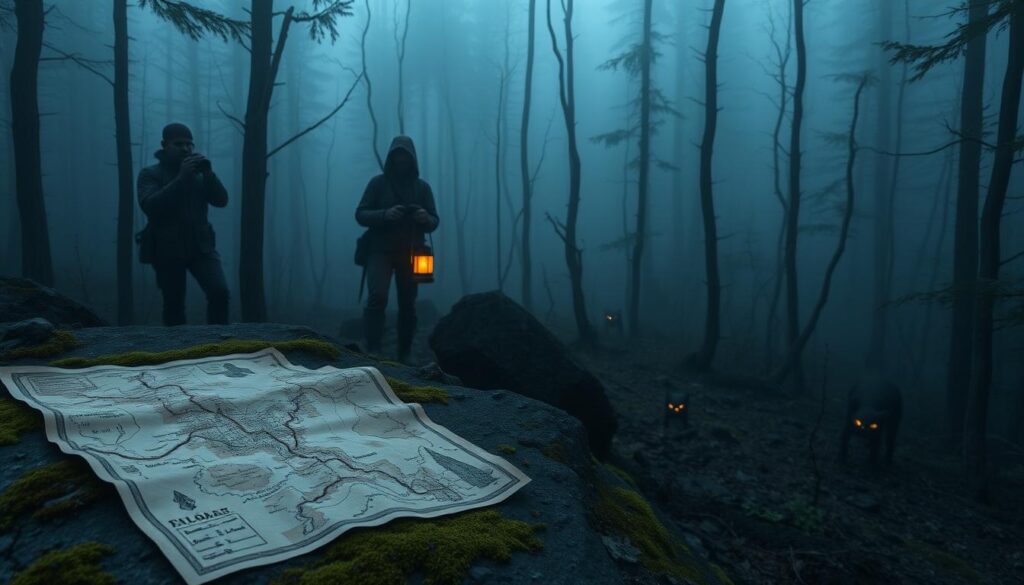
As you consider the ongoing thrill of exploration and adventure, you may find yourself drawn to the rich stories and modern methodologies employed by those dedicated to cryptid hunting. The possibility of encountering the unknown makes every expedition a fascinating journey into the depths of mystery.
Debunking Misidentifications and Hoaxes
Understanding the world of mysterious monsters requires a critical approach to the claims surrounding them. Misidentifications frequently plague investigations into these phenomena. The infamous “surgeon’s photograph” of the Loch Ness Monster, taken in 1934, serves as a prime example. Initially believed authentic, it was ultimately revealed as a hoax involving a toy submarine. This illustrates the necessity of skepticism in the face of sensational claims, as many purported sightings can often be traced back to ordinary objects.
The legend of the Loch Ness Monster, affectionately called “Nessie,” stretches back 1,500 years, with more modern sightings initiated in the 1930s. Notably, the first major interest in the creature emerged from a sighting in 1933. Soon after, reports surged as investigations intensified. Yet, scientific analyses largely attribute these sightings to common objects, like swimming elephants from circuses or fallen tree branches, rather than any mysterious creature lurking beneath the waves.
Noteworthy historical accounts, such as Alexander Macdonald’s description in 1888 of a salamander-like creature, provoke curiosity, but they often falter when subjected to rigorous investigations. In light of this, it is essential to recognize the role of skepticism. This allows for rational explanations to emerge regarding supposed monsters. The scientific community has ruled out large creatures such as plesiosaurs, using DNA analysis of Loch Ness water samples that indicated eel DNA presence along with remnants of other species like sheep, deer, and birds.
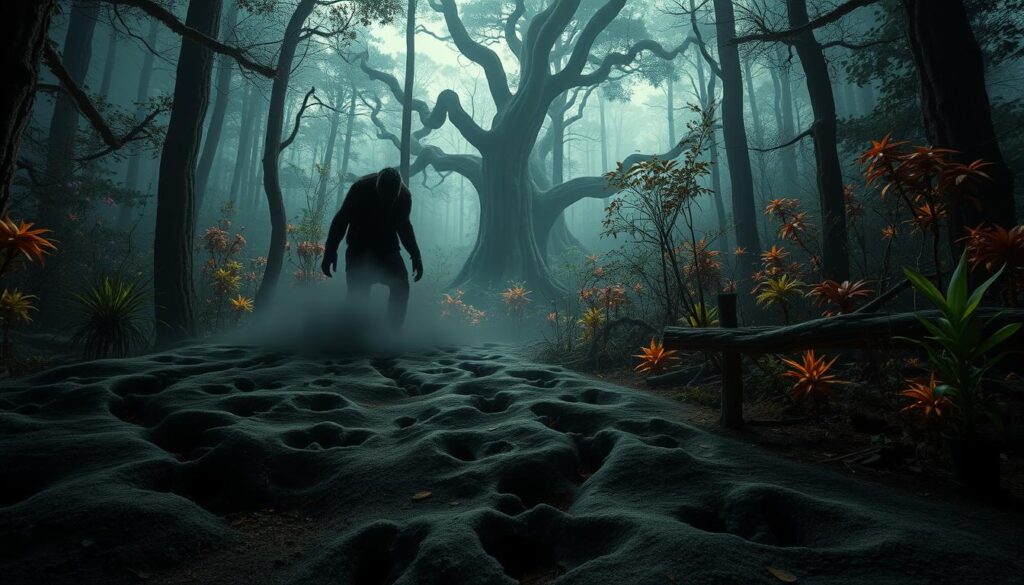
The discourses surrounding these mysteries underline a broader trend: when investigated thoroughly, many claims dissolve under scrutiny. Even false accounts, like George Spicer’s description of a plesiosaur-like dinosaur in 1933 that appears to be sensationalized, reveal how myths can capture the public’s imagination yet lack scientific backing. In the face of astonishing claims, the importance of rational explanations and methodical investigations can guide enthusiasts and researchers alike in differentiating reality from illusion.
| Aspect | Description |
|---|---|
| Hoax Examples | “Surgeon’s Photograph” (1934) – Toy submarine |
| Historical Sightings | Earliest sighting (565) – Alexander Macdonald (1888) |
| Scientific Investigations | DNA analysis rules out plesiosaurs, identifies eels, sheep, deer, and others |
| Tourism Impact | Global allure of the Loch Ness Monster continues to attract visitors |
| Annual Reports | Gary Campbell’s 10 unexplained sightings reported yearly |
The Enduring Power of Myths and Legends
The world of mysterious monsters is rich with myths and legends that have lustrously woven through each culture. These cultural stories serve as reflections of human fears, aspirations, and the profound nature of our relationships with the world. Every tale of a monstrous creature or a heroic figure captures the essence of the human experience, showcasing experiences that resonate across generations.
Consider the narrative structure of the hero’s journey, as popularized by Joseph Campbell. Myths like those surrounding King Arthur or Odysseus demonstrate universal themes of bravery, transformation, and the eternal struggle between good and evil. These stories mirror society’s values and reflect the intricacies of personal growth through trials.
- Key Elements of Myths
- Call to adventure
- Encounters with challenges
- Mentorship and guidance
- Ultimate triumph or transformation
From Norse mythology, where gods sacrifice for wisdom, to Iroquois creation myths involving brave animals as cultural heroes, these narratives emphasize the interconnectedness of all beings. They promote stewardship of nature, urging respect for every living creature. In this way, the resilience of stories lies not only in their ability to entertain but also in their deep-seated lessons that guide behavior and inspire reflection.
Modern narratives, such as Star Wars, continue to draw from these ancient themes, illustrating how myths adapt to contemporary culture while remaining vital. Each story serves not just as entertainment, but as a means for cultural heritage to thrive and evolve, resonating within the collective consciousness and shaping our views of the world.
Conclusion
As we sink our teeth into the fascinating realm of mysterious monsters, it’s clear that these mythical beings hold a substantial cultural significance across various societies. From the iconic Sasquatch, first popularized in the documentary “Mysterious Monsters,” to the aquatic allure of the Loch Ness Monster, these creatures inspire endless curiosity and debate. Even though many sightings have yet to find definitive proof, they spark ideas that blend folklore with the exploration of the unknown.
Looking toward the future of cryptids, the intersection of media, science, and human experience continues to shape our perspective on these enigmatic entities. Public interest has surged, thanks in part to nostalgic films and documentaries that bring these stories to life and generate discussions that echo throughout communities. Though some recent audiences may express skepticism, the allure remains, inviting you and others to ponder possibilities.
In conclusion, the journey through these legends highlights how the quest for understanding the unknown intertwines with our cultural narratives. It beckons you to embrace both skepticism and wonder as you delve deeper into the stories of mysterious monsters, fostering an enduring spirit of adventure that unearths the hidden mysteries of our world.
FAQ
What are mysterious monsters?
Why do we find myths and legendary creatures fascinating?
What is the historical significance of mythical beasts?
What are some well-known cryptids in American folklore?
What is the legend of the Loch Ness Monster?
What does the Thunderbird symbolize in Native American culture?
How is the Yeti portrayed in Himalayan folklore?
What is the Mokele-Mbembe?
How do werewolf and vampire legends reflect our fears?
Why are dragons significant across cultures?
What psychological factors contribute to belief in mysterious monsters?
How does science interact with cryptid folklore?
What role do urban legends play in modern culture?
How can I connect with others interested in cryptids?
What methods are used in expeditions to search for cryptids?
How can we differentiate between genuine sightings and hoaxes?
What is the legacy of myths and legends today?
-
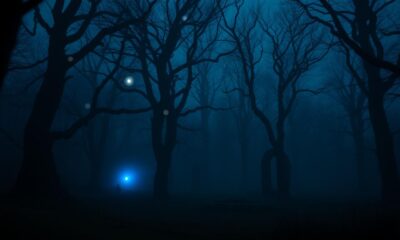
 monsters1 week ago
monsters1 week agoUncover Secrets Behind Spooky Phenomena Today
-
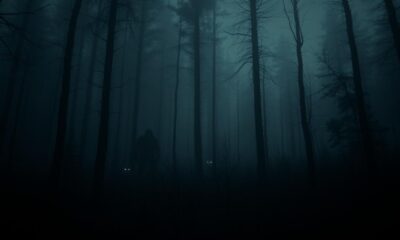
 monsters1 week ago
monsters1 week agoUncover the Truth: Exploring Monster Myths
-

 monsters1 week ago
monsters1 week agoUncover the Truth Behind Urban Mythologies
-

 monsters1 week ago
monsters1 week agoExploring Paranormal Phenomena: Mysteries Unveiled
-
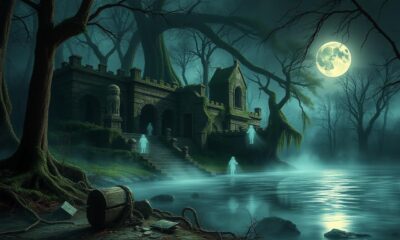
 monsters1 week ago
monsters1 week agoExploring the Mysteries of Supernatural Lore
-
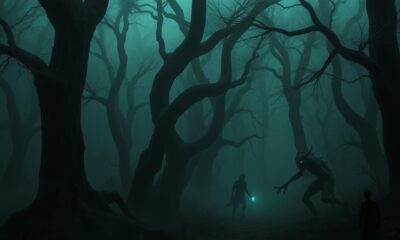
 monsters1 week ago
monsters1 week agoExploring Mysterious Monsters: Secrets Unveiled
-
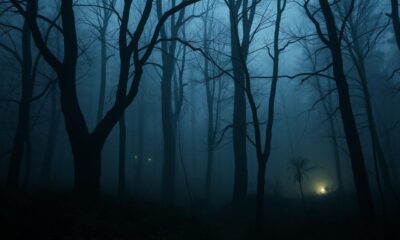
 monsters1 week ago
monsters1 week agoUnlocking Cryptid Mysteries: Explore the Unknown
-
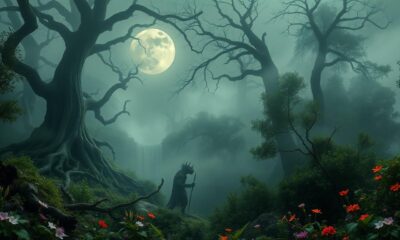
 monsters1 week ago
monsters1 week agoUnveiling Legend Origins: Myths and Folklore Explored







